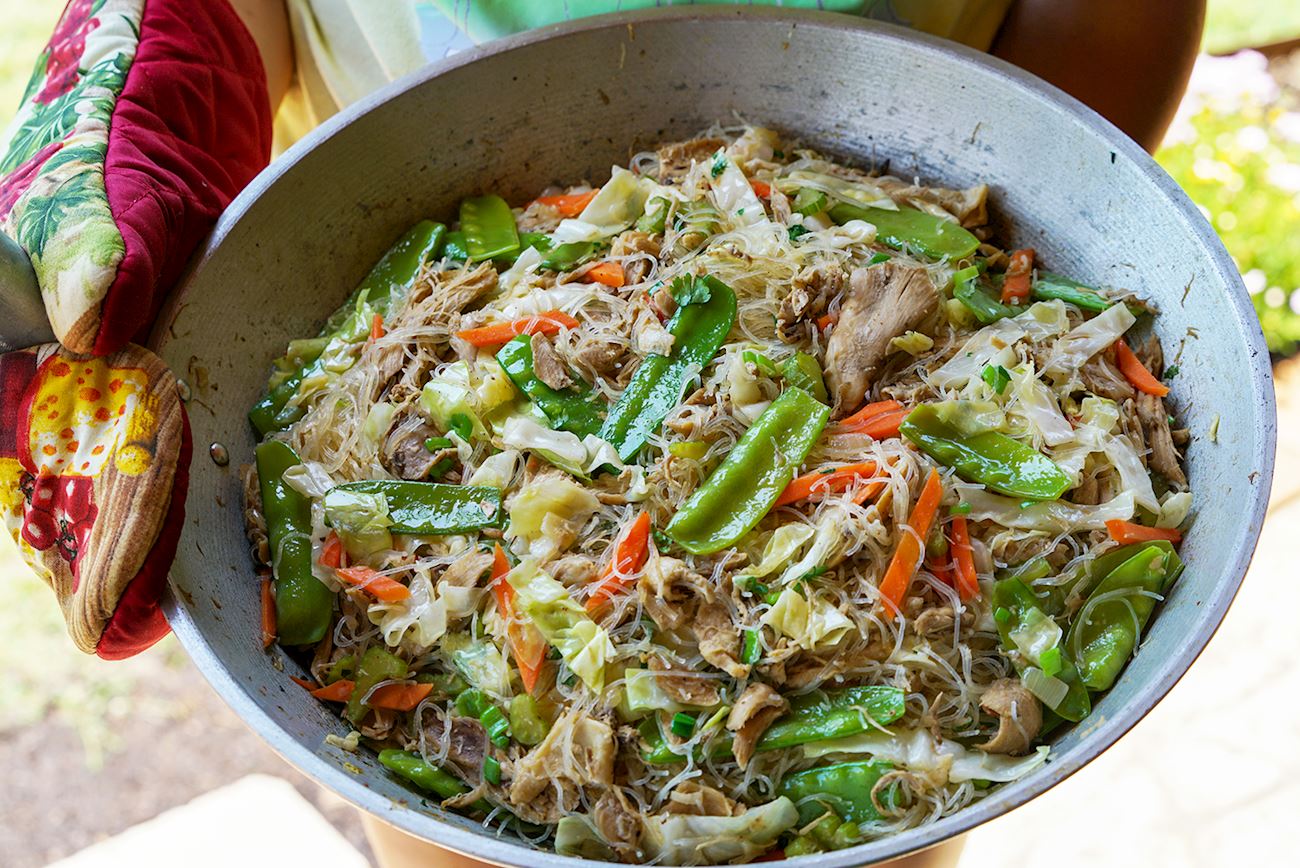
SHUTTERSTOCK

TSAY TEODORICO
Rosquillo is a Filipino cookie that was invented by Margarita Frasco in Cebu in 1907. The name comes from the Spanish word roscas, meaning ringlet, although these cookies have nothing to do with the Spanish rosquilla donuts.
The cookies are made with a combination of eggs, flour, sugar, shortening, and baking powder, while white wine and anise extract can be added for extra flavor, if desired. The dough is shaped into rings before it's baked until golden brown. It is recommended to roll the cookies in sugar before serving, while they are still warm.
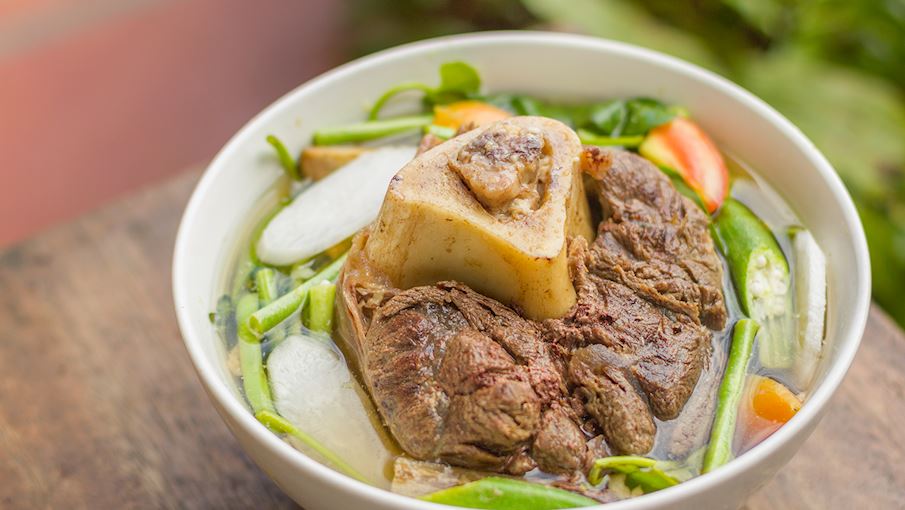
SHUTTERSTOCK
Nilagang baka is a traditional soup originating from the Philippines. Although there are many variations, it's usually prepared with a combination of onions, beef broth, cubed beef, baby bok choy, cabbage, plantains, potatoes, celery, star anise, salt, and pepper.
The soup is simmered until the beef becomes tender and the vegetables are fully cooked. Nilagang baka is especially popular on cold or rainy days, and it's always served hot. Traditionally, it's accompanied by steamed rice and fish sauce (patis). Sometimes, an extra helping of the broth is served in a separate bowl on the side.

SHUTTERSTOCK
Hotsilog is a traditional dish originating from the Philippines, consisting of garlic fried rice, fried eggs, and hot dogs. The Filipino-style hot dogs are red and juicy, usually slightly cut on the sides. They're boiled, then fried in oil and arranged on a plate with garlic fried rice and sunny-side-up fried eggs.
Hotsilog is traditionally served for breakfast and it's accompanied by banana ketchup, atchara (pickled shredded papaya), and tomato slices on the side.

JUDGEFLORO BY CC
Pinipig is immature glutinous rice that is pounded until it transforms into delicate flakes with a unique light green color, subtle flavor, and an unusual, delicate texture. Before consumption, the flakes are usually lightly toasted until crispy and light in color.
The toasted flakes are used in an array of Filipino dishes - they are often incorporated in traditional cookies, candies, and cakes, or used as a topping in creamy desserts such as halo-halo. Pinipig is also employed in Vietnamese cuisine, where it is known as cốm, and in Thailand, where it is more familiar as kao mow.

SHUTTERSTOCK
Inihaw na liempo is a traditional Filipino dish consisting of grilled pork belly. Although there are many variations on the dish, it's usually preapred with pork belly that's marinated in soy sauce, lemon juice, salt, pepper, and garlic. When the pork belly is placed on the grill, it's often basted with a combination of leftover marinade, banana ketchup, and oil.
Once done, the dish is usually served with white rice, spiced vinegar, or toyomansi dipping sauce (soy sauce, vinegar, and chopped onions). Inihaw na liempo can be served as an appetizer or main dish.

SHUTTERSTOCK
Bistek Tagalog is a traditional meat dish originating from the Philippines. It consists of thinly sliced beef that's marinated and braised in a combination of citrus juice (usually from lemon, lime, or calamansi fruit), onions, garlic, soy sauce, and pepper.
It is believed that the dish was derived after the Spanish bistec encebollado. When properly prepared, the flavors should be savory, salty, and tangy. It's important to use only the freshest beef and the most tender cuts such as top round and sirloin.
The dish is traditionally garnished with pan-fried onion rings on top and served with steamed rice on the side.

SHUTTERSTOCK
Also known as abraw and inabraw, dinengdeng is a traditional Filipino soup-like dish that's primarily made with a wide array of vegetables. It originates from the Ilocos region. The dish is typically prepared by boiling water in a pot, seasoning it with bagoong fish sauce, and then adding the vegetables, followed by fried or grilled fish on top, if desired.
The vegetables used in dinegdeng most commonly include jute leaves, marunggay leaves, bitter melon leaves and fruits, alakon blossoms, amaranth leaves, calabaza squash and leaves, sweet potatoes, gourds, string beans, chili peppers, banana blossoms, okra, eggplant, corn, lima beans, mushrooms, taro, and yams.
Before serving, dinengdeng can be topped with fish such as tilapia or bangus.
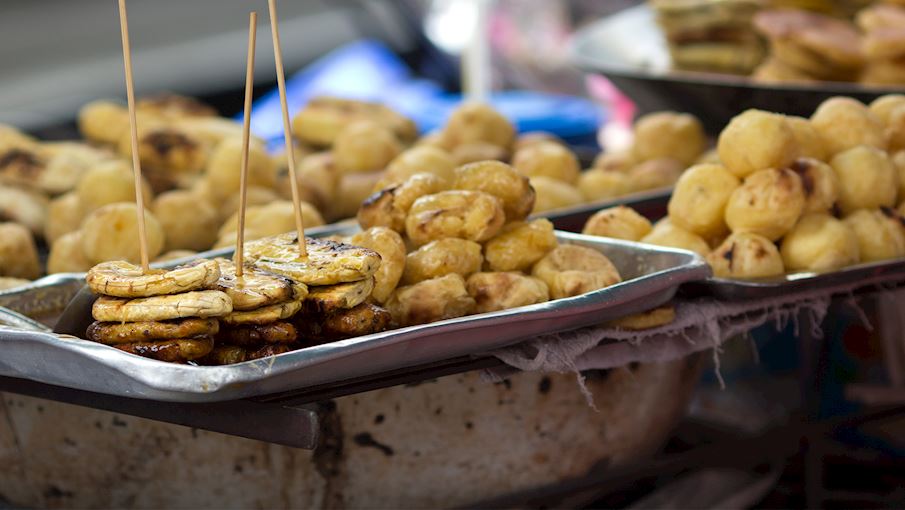
SHUTTERSTOCK
One of the most popular sweet snacks in the Philipines is banana cue, made by deep-frying saba bananas which are generously coated in a thick layer of caramelized sugar. Because they are usually enjoyed as street food, the sweet bananas are often served on bamboo skewers.
The unusual name stems from the term barbecue since caramelized bananas resemble pieces of golden-brown grilled meat. This Filipino classic is usually sold at street stands and enjoyed as a satisfying dessert or a quick afternoon snack.
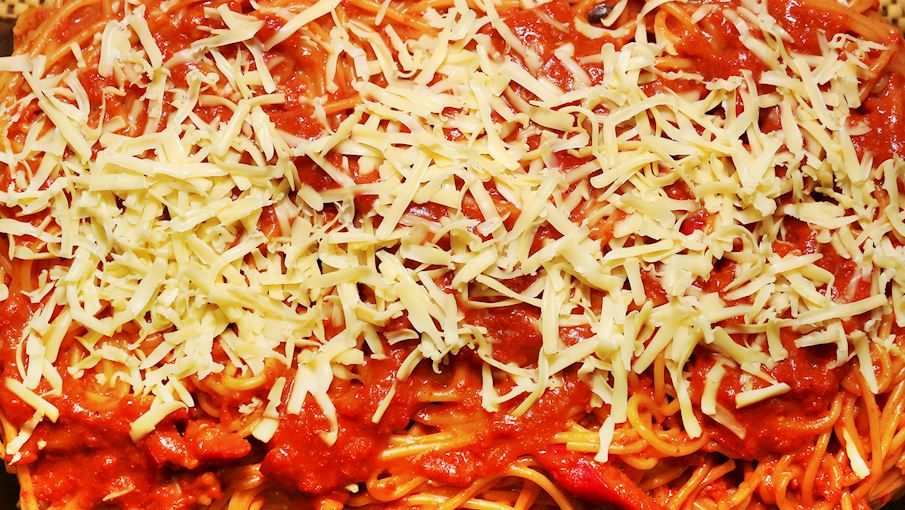
SHUTTERSTOCK
Filipino spaghetti is a dish that has slowly become a national dish in the Philippines, showing up on menus across the country at least once a week. Unlike the Italian version, Filipino spaghetti are sweet, combining the noodles with ground meat, hot dogs, banana ketchup, and sugar.
It is believed that the dish was invented by Filipino mothers who noticed that their children love sugar, so they put a spin on the classic spaghetti dishes. Today, this inexpensive meal is known as the one that unites families, and is consumed by both poor and rich people.

FOXYFOLKSY.COM
Silvanas are the snack version of a traditional Filipino dessert known as sans rival. These frozen cookie sandwiches are made with two cashew-meringue wafers that are held together with a thick layer of buttercream and are generously coated in cashew crumbs.
Although plain versions are the most common, silvanas occasionally come in various flavors such as chocolate, strawberry, mocha, or mango. Popular throughout the country, these cookies have to be refrigerated and are best served well-chilled or frozen.

House of Silvanas
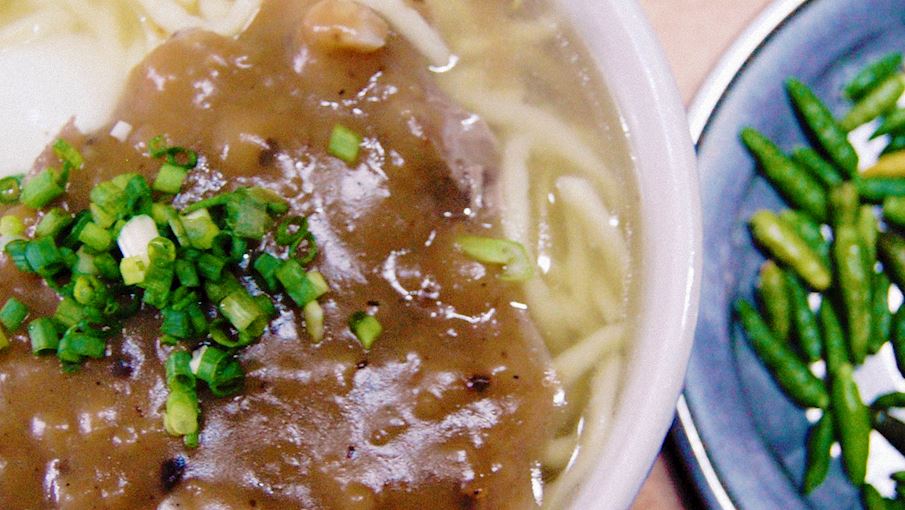
SHUBERT CIENCIA
Kinalas is a traditional Filipino dish originating from the Bicol area. It's made with a combination of noodles, spices, pork or beef brains, and scraped meat from pork or beef head. This noodle soup is served in a shrimpy, garlicky brown gravy consisting of dried shrimps, vinegar, garlic, shallots, soy sauce, and fish sauce.
Kinalas is often garnished with spring onions, fried garlic, or chili peppers, but some people like to add a hard-boiled egg on top. The dish is always served hot, and its name is derived after the Bicolano word kalas, meaning to remove the meat from the bones.

ANG SARAP
The rich and flavorful papaitan is a popular Filipino soup which consists of goat or cow innards such as heart, tripe, or liver, simmered alongside garlic, onions, and various spices. The most important addition to the dish is bile - a bitter liquid extracted from animal livers, giving the soup its distinctive sour flavor and a light yellow color.
This popular Ilocano dish is always served hot and is usually garnished with sliced green onions and chili peppers.

Aysee

CHOPSTICK_DIARIES
The sweet bukayo is a traditional Filipino delicacy made with strips of young coconut flesh that is cooked in coconut water alongside brown sugar and various seasonings. It is simmered until the texture becomes thick, and it is then served shaped in round or flat shapes.
Either crispy or chewy in consistency, it can be enjoyed on its own or as a complement to other desserts.
CHICKEN DISH - Talunan
Talunan is a unique Filipino dish that is usually made with various cuts of chicken simmered in vinegar-based broth alongside garlic, ginger, and a variety of spices. The name of the dish originates from the Filipino term which means defeated, and the dish was initially prepared with roosters involved in one of the favorite Filipino pastimes – the infamous cockfights.
The cock which would lose or die in the fight was employed in the preparation of the dish. Nowadays, talunan is not exclusively related to cockfights, and it is prepared in many Filipino households.
SOUP - Lauya

SHUTTERSTOCK
Lauya is a comforting Filipino dish which may consist of chicken, pork, or beef that is slowly stewed in a flavorful broth alongside various spices. It appears in many regional varieties and often includes different vegetables such as cabbage, carrots, and potatoes.
The meat is usually left on the bone and it is occasionally shortly smoked before being cooked. Lauya is the perfect example of traditional Filipino comfort food, always served hot and typically enjoyed with plain steamed rice on the side.
SOUP - Pinikpikan

SHUTTERSTOCK
Pinikpikan is a controversial dish originating from the Cordillera mountainous region in the Philippines. The soup consists of chicken and etag, which is cured and smoked meat that has been kept underground in earthen jars. What makes pinikpikan controversial is the way that the chicken is slaughtered – it is gently beaten to death with a stick in a ritual performed by local tribes.
The chicken is beaten to keep the blood inside, and if properly done, it will not be bloody when cut. No bones should be broken during the beating and slicing process. However, the preparation method is in violation of the Philippine Animal Welfare Act of 1998.
The chicken is combined with water, etag, and salt, and the concoction is then boiled until it’s ready to be served.
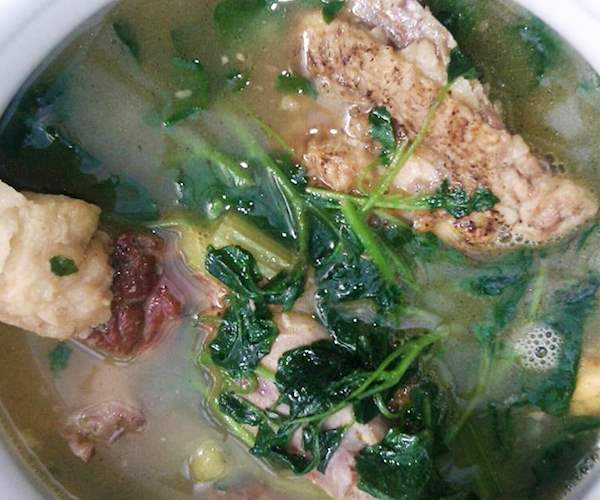
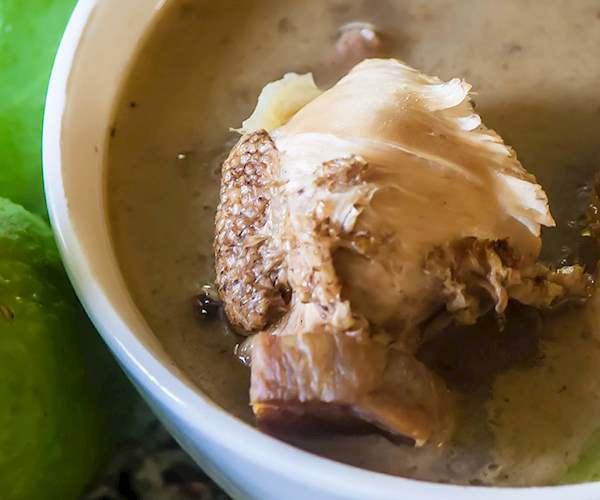
DESSERT - Ube halaya
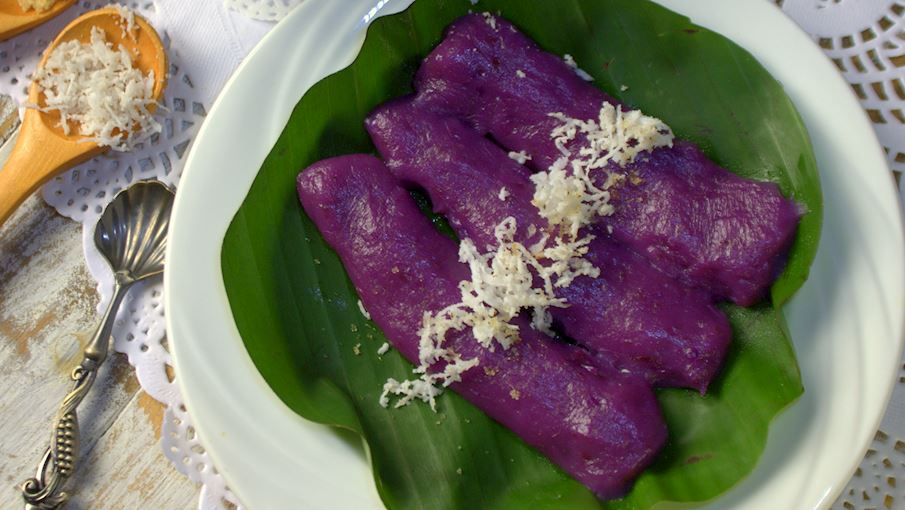
SHUTTERSTOCK
Ube halaya is a famous Filipino dessert made with purple yam. It is easily prepared by cooking mashed purple yams in plain milk, coconut milk, or condensed milk alongside sugar and vanilla essence. When set, it results in a slightly sweet treat that has a sticky texture and a unique purple color.
Even though it can be eaten plain, ube halaya is often incorporated into other Filipino desserts or eaten as a creamy spread. It can be served well-chilled or lukewarm and is usually sprinkled with toasted coconut flakes or latik - the crispy Filipino coconut curds.
APPETIZER - Kilawin
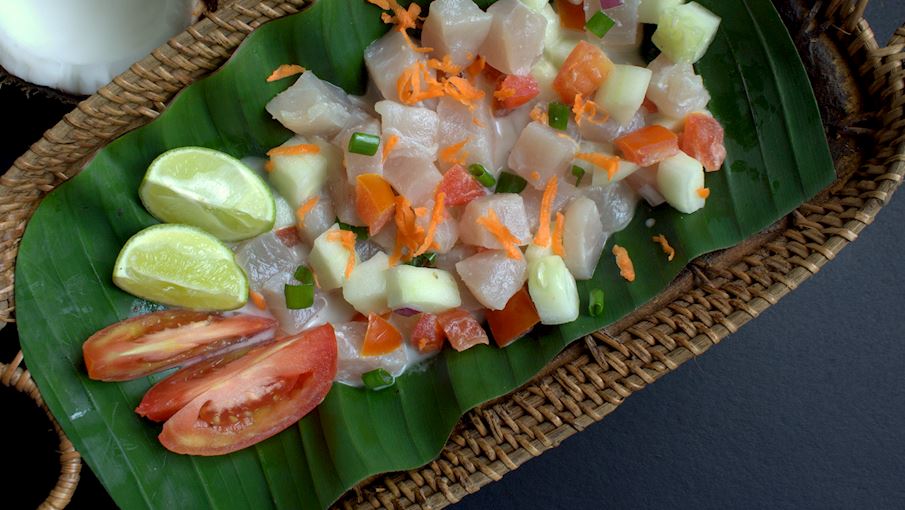
SHUTTERSTOCK
Kilawin is a term which refers to a broad group of Filipino dishes which are similar to the Italian crudo or the Peruvian ceviche. It can employ meat or seafood which is cut or sliced, then blended with vinegar, citrus juices, and a variety of spices and fresh herbs.
Even though the ingredients are sometimes pre-cooked, they are most commonly used raw, allowing the vinegar to act as a cooking agent. Kilawin is typically served as an appetizer or a side dish during traditional Filipino beer-drinking sessions.
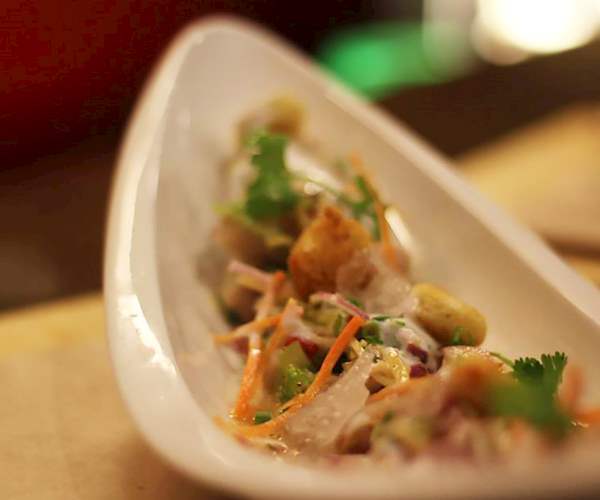
Los Indios Bravos Boracay

Yellow Fin Seafood Restaurant
STEW - Pochero
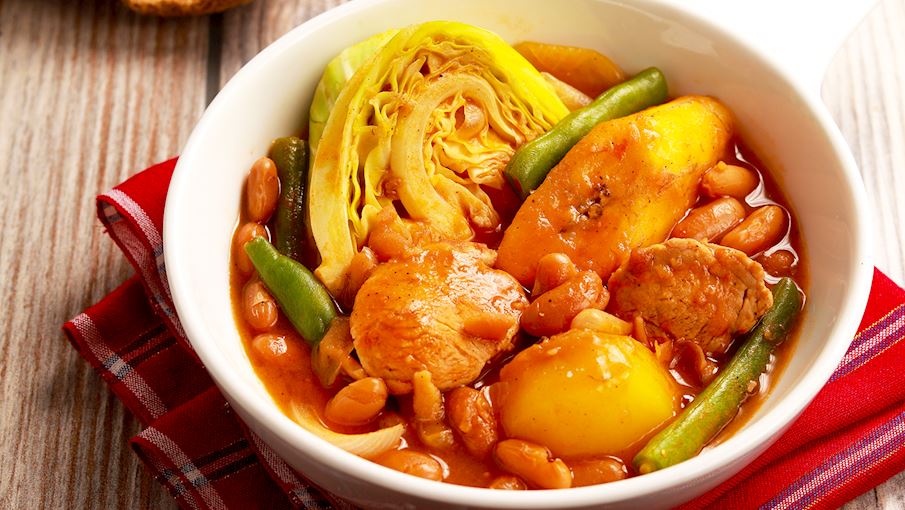
SHUTTERSTOCK
Pochero is a beloved Filipino stew that was created as a variation on the Spanish puchero. It's made with a combination of meat (beef, but it can also be made with chicken or pork), tomatoes, onions, garlic, patis fish sauce, peppercorns, chickpeas, leeks, plantains, potatoes, cabbage, green beans, and bok choy.
The stew is simmered until the vegetables and the meat become tender. Pochero is especially popular on cold or rainy days, when it's customarily served piping hot with rice on the side.
SOUP - Sinigang na hipon

SHUTTERSTOCK
Sinigang na hipon is a Filipino shrimp soup characterized by its sour and strongly savory flavor. In addition to shrimp, this dish contains a great variety of vegetables, including onions, tomatoes, string beans, banana peppers, water spinach, taro, radishes, and ladies’ fingers, with ginger and fish sauce being added for extra flavor.
Sinigang’s signature sour flavor comes from tamarind, but other natural souring agents, such as green mango, guava, santol, calamansi, bilimbi, or pineapple can also be used. Sinigang na hipon is very popular in the Philippines, where it is considered a homemade specialty.
It is traditionally served hot with rice and fish sauce on the side.
DESSERT - Maja blanca
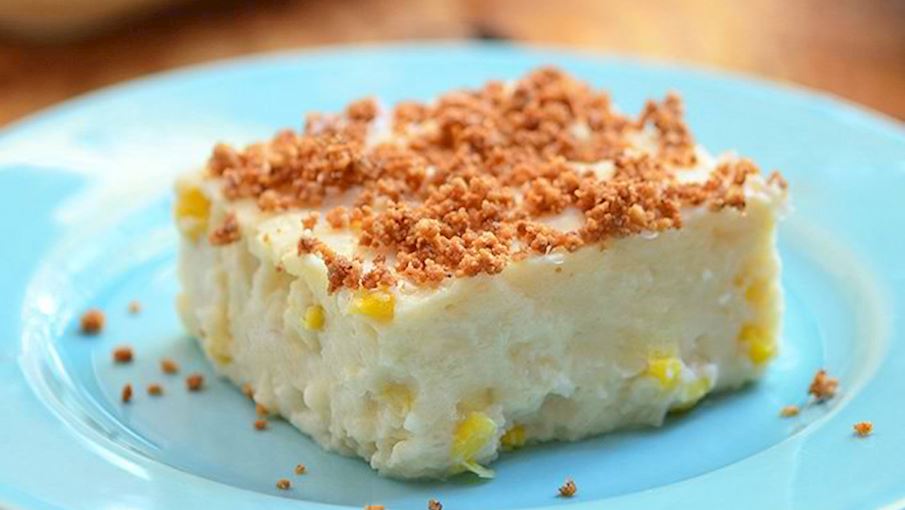
KAWALINGPINOY
Light and creamy maja blanca is a popular Filipino dessert which consists of coconut milk thickened with cornstarch and blended with whole corn kernels. Many modern varieties of this classic incorporate condensed or plain milk, cream, or diced cheese and are traditionally garnished with toasted coconut flakes or coconut latik.
As the name suggests, this refreshing delicacy is the authentic Filipino variation of the popular manjar blanco, the creamy milk-based dessert found in numerous Spanish speaking countries. In the Philippines, maja blanca is a staple holiday dessert served on many special occasions.
SNACK - Lumpiang Shanghai

SHUTTERSTOCK
Lumpiang Shanghai is the most popular variety of lumpia, the crispy deep-fried Filipino snack that evolved from Chinese spring rolls. Even though lumpia appears in numerous variations, the Shanghai version is characterized by a savory filling which combines ground pork or beef with carrots, onions, various seasonings, and (occasionally) shrimps.
Lumpiang Shanghai is usually sold at numerous street stalls throughout the country, but it is also a staple dish served on special and festive occasions. This delicious and crispy snack is usually served accompanied by sweet and sour dipping sauce.

The Aristocrat

Luyong Restaurant

Good Taste
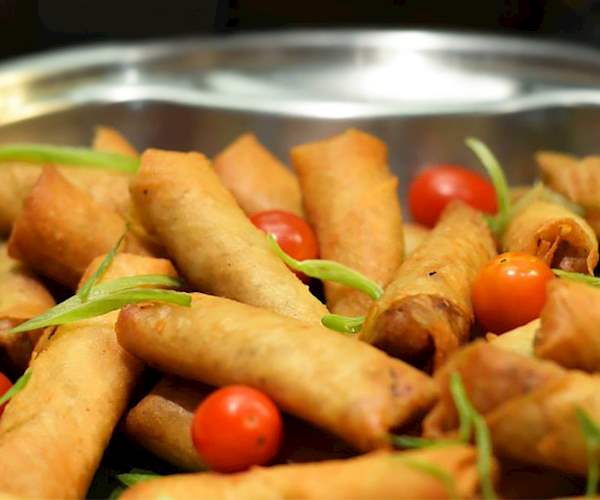
Cafe Ilang-Ilang
SOUP - Sinigang na baboy
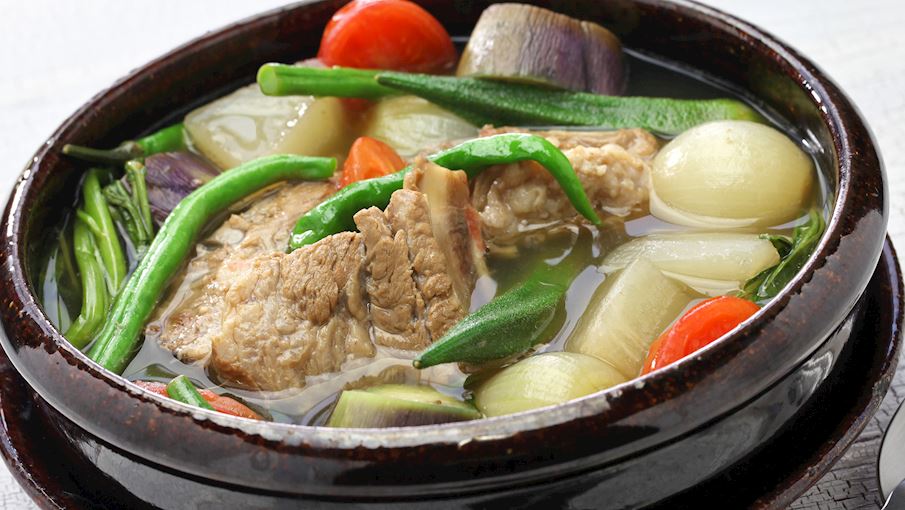
SHUTTERSTOCK
This variety of sinigang - Filipino savory and sour soup - consists of various pork cuts that are simmered along tamarind fruit. Tomatoes, onions, garlic, okra, white radish, water spinach and green long peppers are also commonly used for this soup.
There is also a similar dish in Malaysian cuisine called siniggang. A version of the pork sinigang is sinigang na miso, which uses the Japanese seasoning made from fermented rice and barley or soybeans. Nowadays, sinigang mix is available in supermarkets, but enjoying the dish made from scratch represents the full experience.
DESSERT - Inipit

DIANE_KHO
Inipit is a popular Filipino dessert consisting of two sponge cakes combined with a creamy, custard-like filling. Although it exists in many versions, the most common combination of flavors is plain vanilla sponge with a mashed potato filling. It originated in the city of Malolos and was invented by Salome P.
De Ramos in the 1940s. Nowadays, it is one of the most famous signature dessert stemming from the Bulacan region, and it is usually sold at traditional Filipino bakeries.
DESSERT - Kalamay
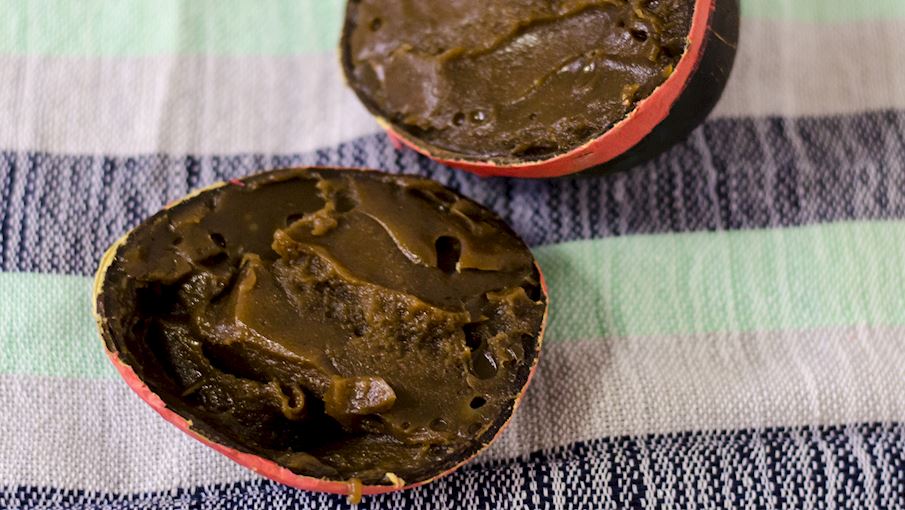
SHUTTERSTOCK
Sweet and sticky kalamay is a popular Filipino delicacy which consists of coconut milk, glutinous rice, and brown sugar. It is produced in a time-consuming process in which the rice and coconut milk are boiled, ground into a paste, mixed with brown sugar, and then cooked until the desired consistency is achieved.
There are numerous regional varieties of kalamay in the Philippines which often differ in the additional ingredients and serving styles. Most varieties are eaten on their own as a sweet snack or a nutritious breakfast, but they are also commonly used as a sweetener in various desserts and beverages.
SALTWATER FISH DISH - Daing na bangus

SHUTTERSTOCK
This traditional Filipino dish consists of butterflied, marinated milkfish that is pan-fried until crispy. The marinade usually combines vinegar, garlic, and various spices, and the fish is prepared with the skin intact, which adds an additional crunch to its texture.
Daing na bangus can be enjoyed as a filling lunch or breakfast, and it is usually accompanied by garlic-fried rice, fried eggs, pickled vegetables, and spicy vinegar.

AA BBQ
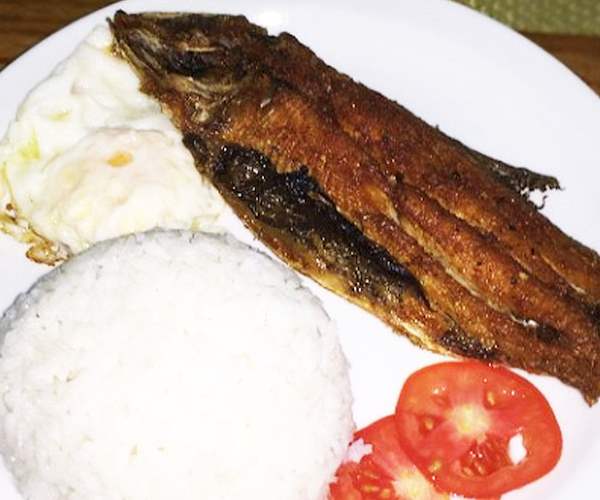
Choco-late de Batirol
DESSERT - Palitaw
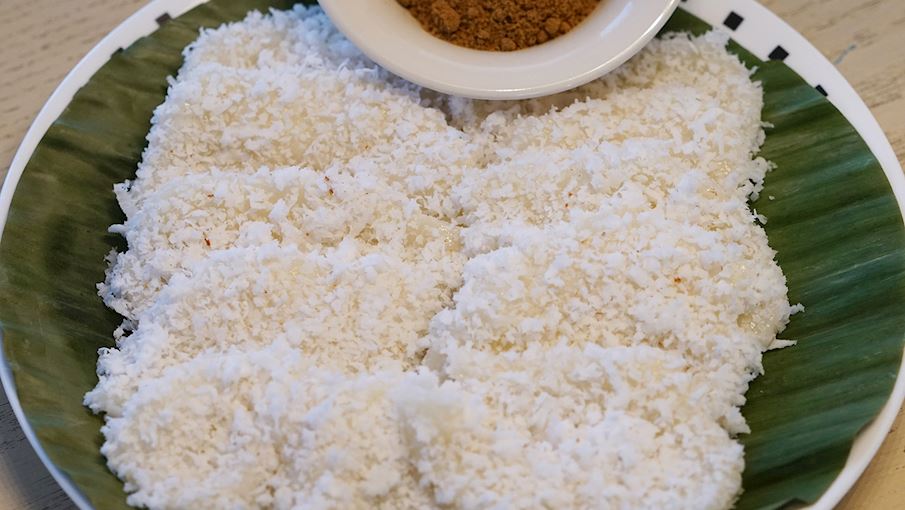
SHUTTERSTOCK
Palitaw is a popular Filipino boiled rice cake. These rice cakes were traditionally prepared with pounded rice, but today there are mainly made with a combination of glutinous rice flour and water. Characterized by their round and flat shape, they are boiled in water, then rolled in grated coconut and sweetened sesame seeds.
The name is derived from the Filipino word litaw, which means to float, referring to the preparation method in which the cakes are boiled until they start floating on the surface. Just like other rice cakes in the Philippines, palitaw is enjoyed as a dessert, but it also makes for a satisfying afternoon treat.
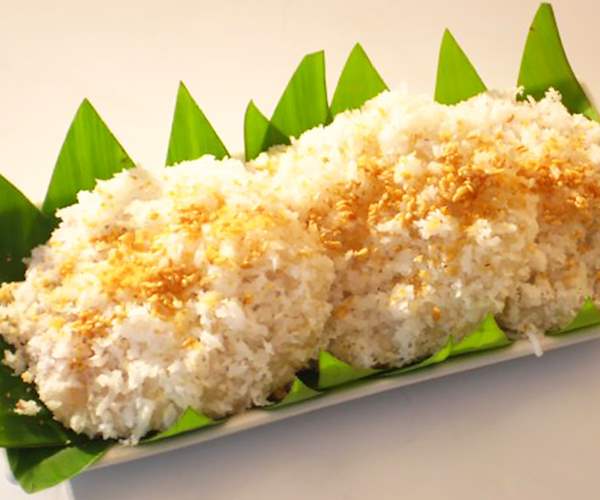
Tootsie's
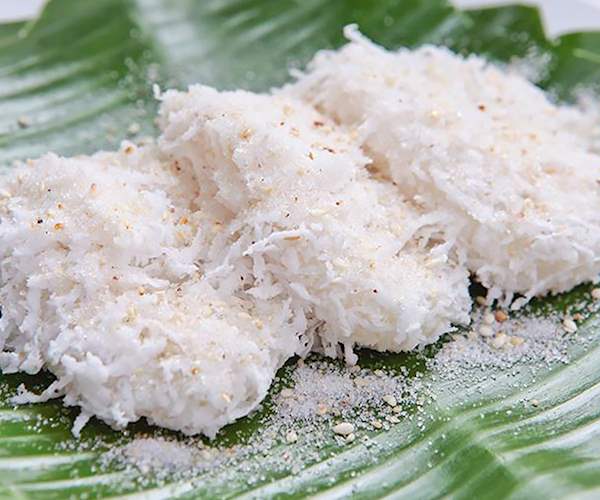
Cafe Via Mare
DESSERT - Espasol

TELEVIDO (CC BY-SA 4.0)
Espasol is a soft, chewy Filipino rice cake prepared with a combination of toasted glutinous rice flour and grated green coconut that is slowly cooked in coconut milk. The mixture turns into soft, pliable dough that is shaped into long cylinders or triangles before each cake is coated in rice flour.
Espasol is associated with the Laguna region, where it is a hailed as a local specialty that is usually bought at various restaurants, stores, and street stalls.
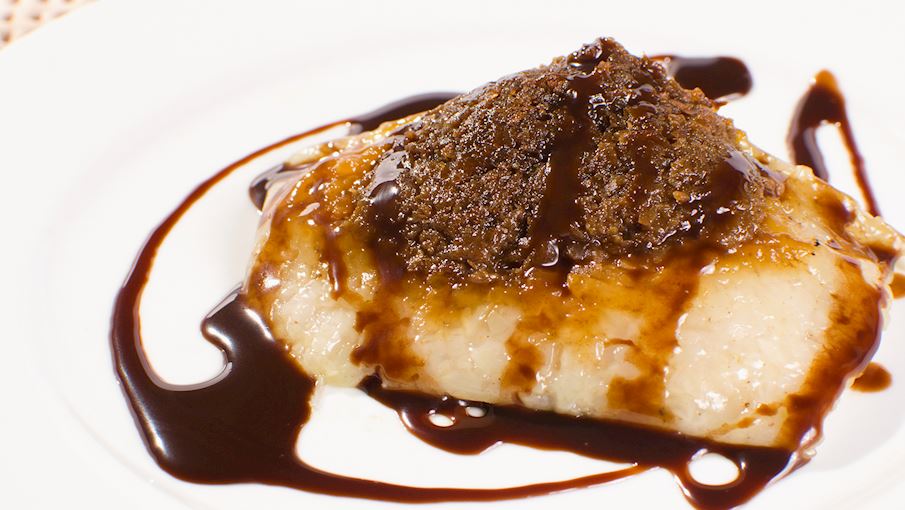
SHUTTERSTOCK
Depending on the region, the Filipino term latik can refer to two separate dishes: either coconut curds produced by heating coconut milk to separate the oil, or a thick and sweet coconut syrup made by reducing a combination of coconut cream and sugar.
The golden brown curds are usually used as a crunchy topping on creamy desserts, while the syrup can be utilized as a condiment or even as a sweetener in hot or cold beverages.
SWEET PASTRY - Otap

SHUTTERSTOCK
Otap is a sweet, thin, oval-shaped Filipino treat made with puff pastry. These treats are usually small in size, generously sprinkled with sugar, and have an incredibly crispy and crumbly texture. It is believed that otap originated in Cebu, and today it represents a signature product of the entire region.
The sugary biscuits are available at numerous local markets and stores and are usually enjoyed as a light dessert or a sweet afternoon snack.
SNACK - Maruya

SHUTTERSTOCK
Maruya are the famous Filipino banana fritters which consist of sliced or mashed bananas that are dusted with flour, battered, then fried until crispy. The fritters are usually made with Filipino saba bananas and can come in various forms which are often served lightly dusted with sugar.
They are most commonly eaten as a light snack, sweet breakfast, or a filling afternoon dessert. These fritters are a favorite among children and can often be found at street stalls throughout the country.
WHITE FISH - Bangus

SHUTTERSTOCK
Bangus is the national fish of Philippines, called milkfish in English. It is an adaptable, tough, and sturdy fish that can survive in confined spaces, so it is regularly bred on fish farms, which is the reason why it is widely available all over the Philippines.
The flavor of milkfish is distinctive and mild, best paired with complementary ingredients. Bangus is usually cooked in soups, fried, grilled, barbecued, stuffed or stewed in various spices, ginger and vinegar, but the varieties of bangus-based dishes are numerous.
There is bangus nilagpang with broiled milkfish, tomatoes and onions, rellenong bangus with fried and stuffed milkfish, cooked bangus in coconut milk, marinated bangus strips in pasta... and the list goes on. Regardless of the preparation method and the additional ingredients used in dishes, bangus is a unique Filipino delicacy that shouldn't be missed.
NOODLE DISH - Pancit lomi

SHUBERT CIENCIA (CC BY 2.0)
Pancit lomi is a hearty Filipino soup consisting of fresh egg noodles served in a rich, flavorful broth. Many regional varieties are thickened with flour or eggs and incorporate pork or chicken, sliced pork liver, and a variety of vegetables. The most famous version of pancit lomi originates from Batangas and often employs sliced kikiam, ham, or meatballs.
This Chinese-influenced dish is always served hot and it is usually sold by numerous street vendors throughout the Philippines.

Lomi King
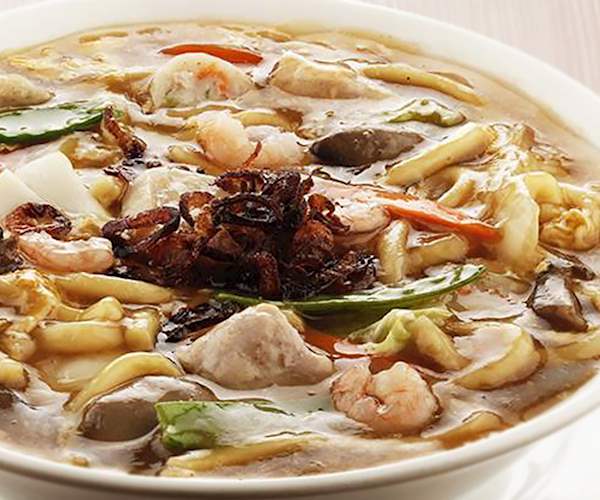
Classic Savory
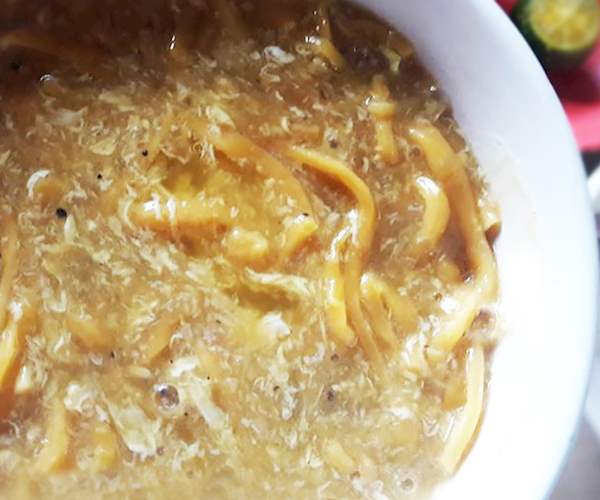
LBN Lomi House
EGG DISH - Tortang talong

SHUTTERSTOCK
Tortang talong is a simple Filipino dish made with a combination of roasted eggplants and lightly beaten eggs. Whole eggplants are dipped into the egg mixture and are then shortly pan-fried until the entire dish starts to resemble a crispy omelet.
This versatile delicacy is easily adapted with additional ingredients such as ground meat and vegetables, and it is traditionally served accompanied by steamed rice and tomato or banana ketchup. Inexpensive and quickly prepared, tortang talong can be enjoyed at any time of day as a hearty breakfast, lunch, or dinner.
PAIR WITH Ketchup Banana Ketchup
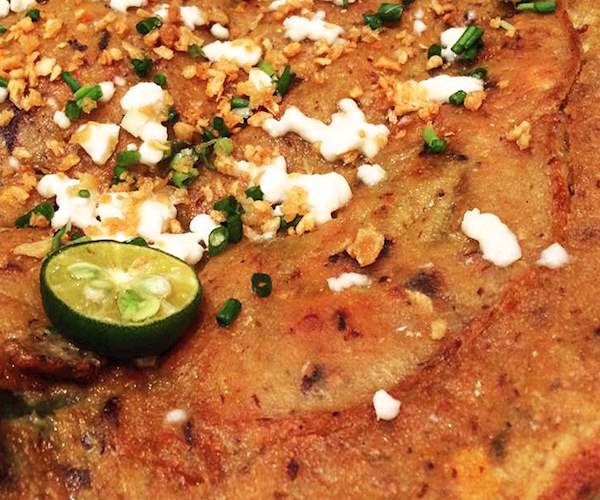
Sarsa Kitchen + Bar

La Preciosa Restaurant
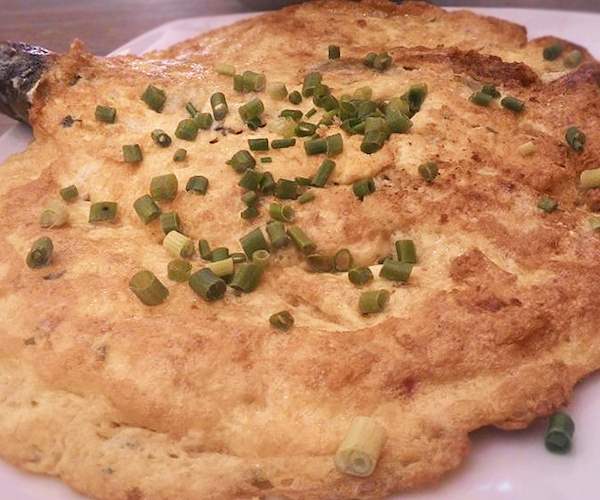
Wooden Spoon

8065 Bagnet Restaurant
STEW - Bopis
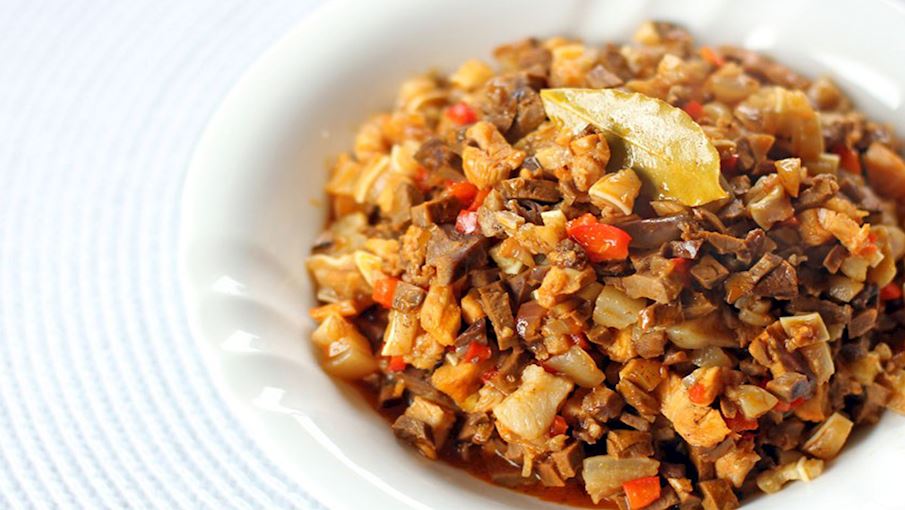
ANG SARAP
Bopis is a traditional Filipino dish which usually consists of animal’s (usually beef or pork) heart and lungs that are stewed alongside garlic, onions, and a variety of vegetables and spices. Eaten throughout the country, the dish appears in numerous version which may differ in the choice of ingredients, textures, and levels of spiciness.
It is traditionally eaten as an appetizer or a snack accompanied by alcoholic beverages, but it also makes a satisfying main meal with steamed rice served on the side.

1st Colonial Grill
DESSERT - Sapin-sapin

SHUTTERSTOCK
The colorful sapin-sapin is a unique Filipino rice cake. It is made with a simple batter of rice and coconut milk, and usually consists of three separate layers which are tinted and flavored with different colors and aromas. The most popular combination consists of a yellow bottom layer infused with jackfruit, the plain white middle layer, and the vibrant purple top blended with sweet yams.
After it is steamed and before serving, the cake is usually garnished with toasted coconut flakes or latik coconut curds.
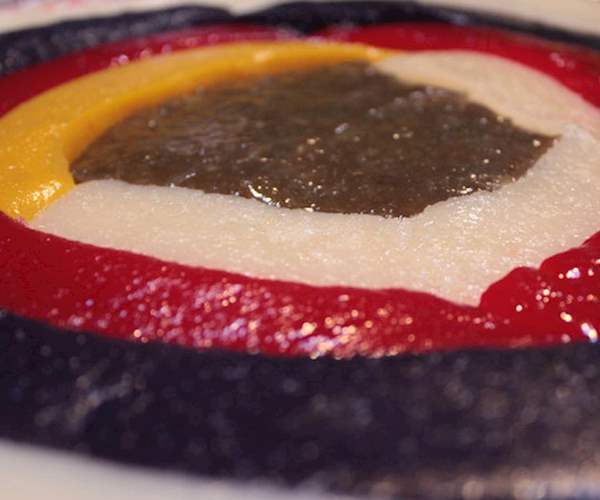
Dolor's Kakanin

XO 46 Heritage Bistro

Sebastian's Ice Cream
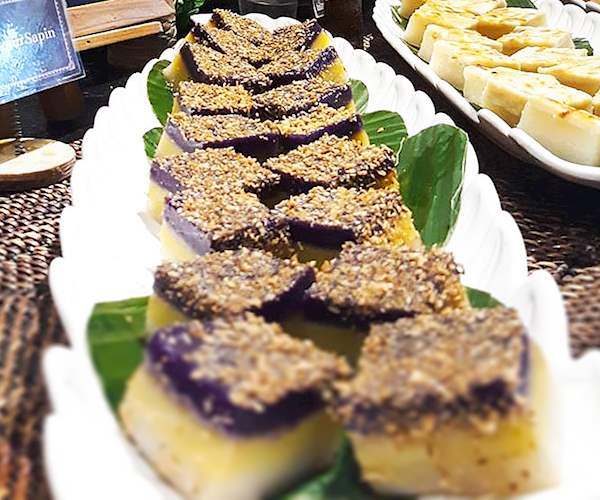
Vikings
MEAT DISH - Morcon
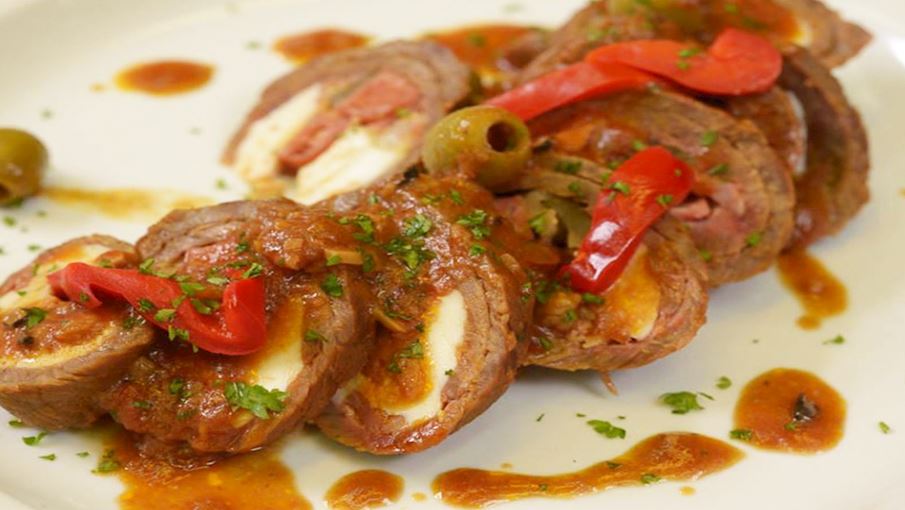
RELAXLANGMOM.COM
Morcon are delicious Filipino stuffed meat rolls. They usually consist of thin slices of pork or beef wrapped around neatly arranged sausages, carrots, pickles, and hard-boiled eggs. The rolls are shortly braised, then usually served sliced alongside thick sauces based on tomatoes or soy.
Morcon is a dish prepared on various special occasions and is commonly enjoyed on New Year’s Day, since many Filipinos believe that eating round-shaped food will ensure prosperity in the following year.

Chef Laudico Guevarra's
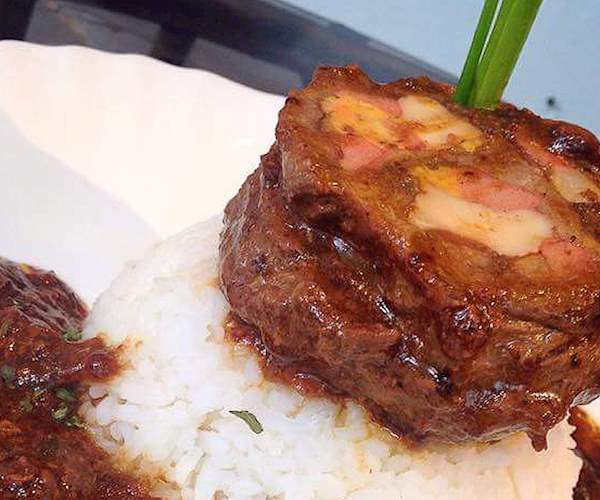
Chef Pal's
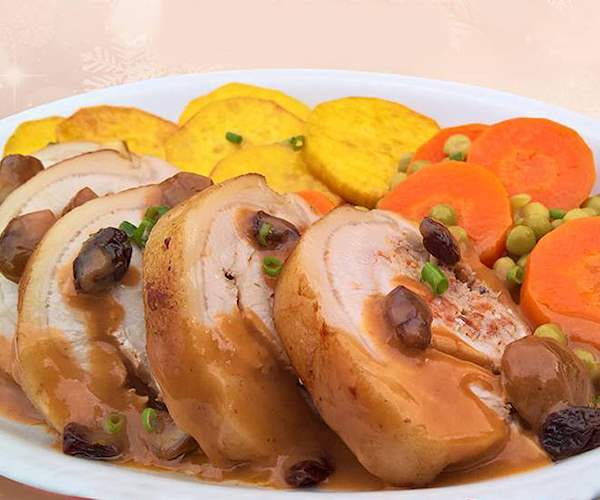
Abe
STEW- Afritada

SHUTTERSTOCK
Afritada is one of many traditional Filipino stews which use a tangy tomato sauce as the key ingredient. Since it is an incredibly popular dish, there may be variations in recipes, but it is usually prepared with diced chicken or pork stewed in tomato sauce alongside potatoes, bell peppers, and carrots.
This flavorful Filipino dish is usually accompanied by plain steamed rice, then enjoyed as a satisfying main course.
PORRIDGE - Champorado

SHUTTERSTOCK
Champorado is a thick Filipino rice pudding. Originally prepared with chocolate, nowadays it is usually made with cooked glutinous rice blended with sugar and cocoa powder. The origins of the dish derive from a Mexican chocolate-based drink known as champurrado, which was introduced during the colonial period.
Usually enjoyed as a hearty breakfast or a sweet afternoon snack, Filipino champorado can be served hot or cold, drizzled with condensed milk, or accompanied by salted dry fish.
CHEESE - Kesong Puti
Kesong puti is a white cheese originating from the Philippine provinces of Bulacan, Bacolod, Cebu, Laguna, and Samar. It is made from carabao milk, salt, and either rennet or white vinegar. This fresh cheese contains five times more milk fat and protein than fresh milk.
It has a slightly pungent aroma and a salty flavor with a creamy aftertaste. Kesong puti is often consumed for breakfast, when it is served with local bread known as pan de sal, but the cheese is also typically served during Christmas and New Year’s festivities.
SWEET SOUP - Bilo-bilo
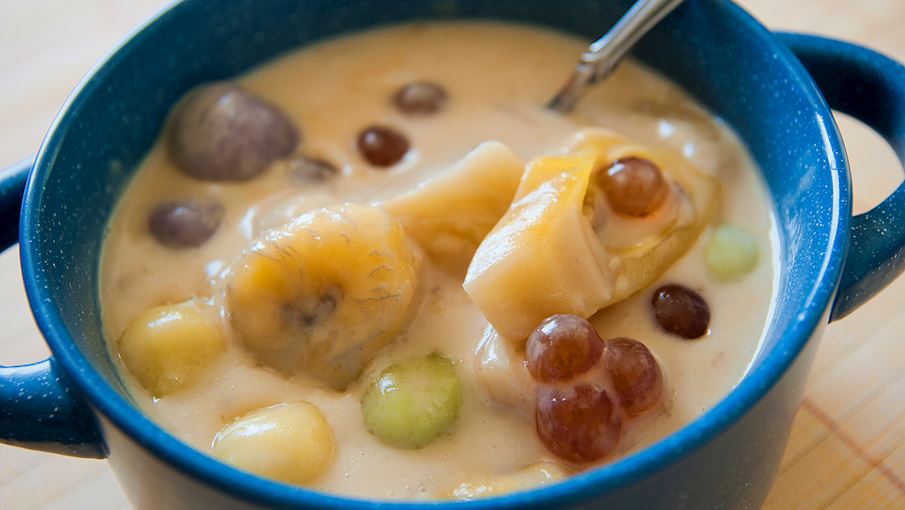
SHUTTERSTOCK
The sweet bilo-bilo is a popular Filipino treat made with chewy rice balls cooked in a creamy coconut milk blend. It can also incorporate bananas, tapioca pearls, sweet potatoes, or sliced jackfruit. Whether served warm or cold, bilo-bilo is usually enjoyed as a satisfying afternoon dessert or a sweet snack.
Since these round rice balls symbolize prosperity and togetherness, this refreshing treat is also a staple dessert served on special occasions such as weddings or New Year.
TECHNIQUE - Paksiw
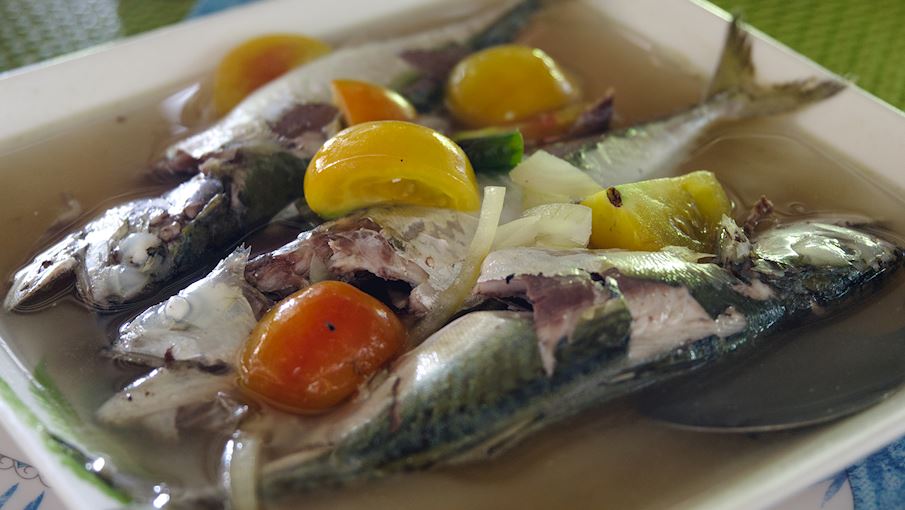
SHUTTERSTOCK
Paksiw is a Filipino cooking technique that refers to various dishes that are simmered in vinegar. The method is used in the preparation of fish or meat-based dishes which can also incorporate additional ingredients such as garlic, vegetables, seasonings, and various spices.
The most popular dishes that fall into this category include pork-based paksiw na baboy and paksiw na isda that employs fish as the main ingredient. Paksiw dishes are usually served with rice on the side.
DEEP-FRIED DESSERT - Cascaron

ONEBRAINY1 (CC BY-SA 2.0)
Round, sweet, and chewy cascaron is a deep-fried Filipino delicacy usually served doused in sugary syrups. Often referred to as bitsu bitsu, this traditional treat is made with sweet glutinous rice flour, shredded coconut, and coconut milk.
The dough is shaped into small round balls and deep-fried until golden and crispy on the outside. Although they can be served plain, these luscious balls are often smothered in various sweet syrups, such as the simple sticky caramel sauce or the traditional Filipino latik, the creamy glaze made with coconut milk and sugar.
The incredible variety of textures and the mild flavor of coconut make cascaron one of the most popular Filipino desserts. Even though they are commonly prepared at home as a quick after-dinner treat, they are often sold as street food by numerous vendors who traditionally serve them skewered on bamboo sticks.
DESSERT - Nata de coco

SHUTTERSTOCK
Nata de coco is a unique Filipino specialty that is made with fermented coconut water and usually eaten as a dessert. After days of fermentation, it transforms into a jelly-like substance with a soft, chewy, and gelatinous texture. Plain nata de coco is pale white and almost translucent, neutral in flavor, and usually cut into large cubes.
It initially appeared in the Philippines and became incredibly popular in Japan during the 1990s. Nowadays, it is found in a variety of different flavors and shapes, and even though it can be eaten plain, it is usually incorporated in refreshing fruit salads, yogurts, ice-cream, and drinks.
PORRIDGE - Lugaw

SHUTTERSTOCK
Lugaw is a Filipino rice porridge that is traditionally thought of as soft food for sick people, due to the fact that it doesn't require much chewing. Warm, filling, and mushy, the dish acts as an ideal base for any type of meat and seasonings, just like a congee.
Lugaw is usually consumed for breakfast or as a snack. Many cooks like to add chicken, lemon, and ginger in order to improve the flavors of the dish. After that, it can be flavored with typical Filipino ingredients: scallions, garlic chips, sliced hard-boiled eggs, calamansi, or fish sauce.
Lugaw is also traditionally prepared as a part of the Christmas Eve celebratory meal known as Noche Buena.

Lugawan Republic
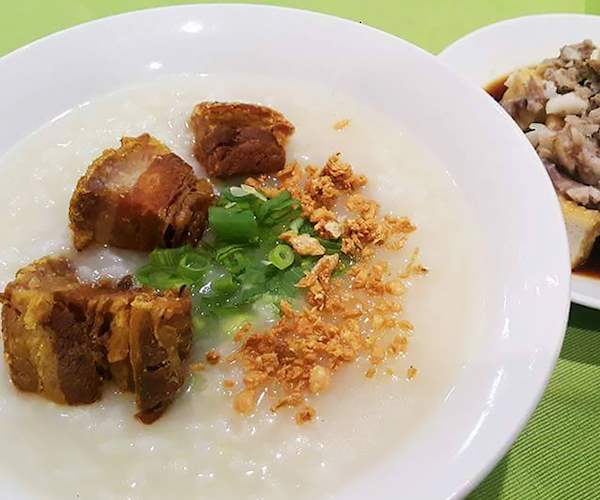
Davao Dencia's Restaurant
NOODLE DISH - Pancit malabon

SHUTTERSTOCK
Pancit Malabon belongs to a broad group of traditional Filipino stir-fried noodle dishes. It is prepared with thick rice noodles doused in a flavorful shrimp-infused sauce and usually incorporates various seafood ingredients such as shrimps, squids, or mussels.
The dish is often served topped with hard-boiled eggs, pork cracklings, sliced cabbage, and fish flakes. As the name suggests, it stems from the coastal region of Malabon, famous for its abundance of fresh seafood ingredients. Like other pancit varieties, this local favorite is also traditionally served on special occasions.

Nanay's Pancit Malabon

Mama Belen's Kitchenette
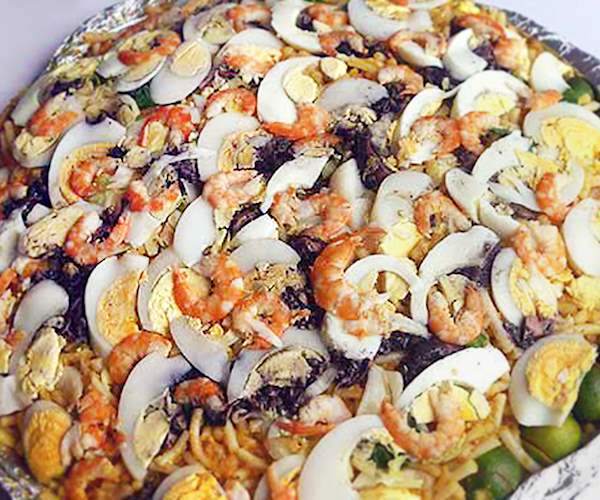
Norma's Pansit Luglog and Restaurant
CAKE - Kutsinta
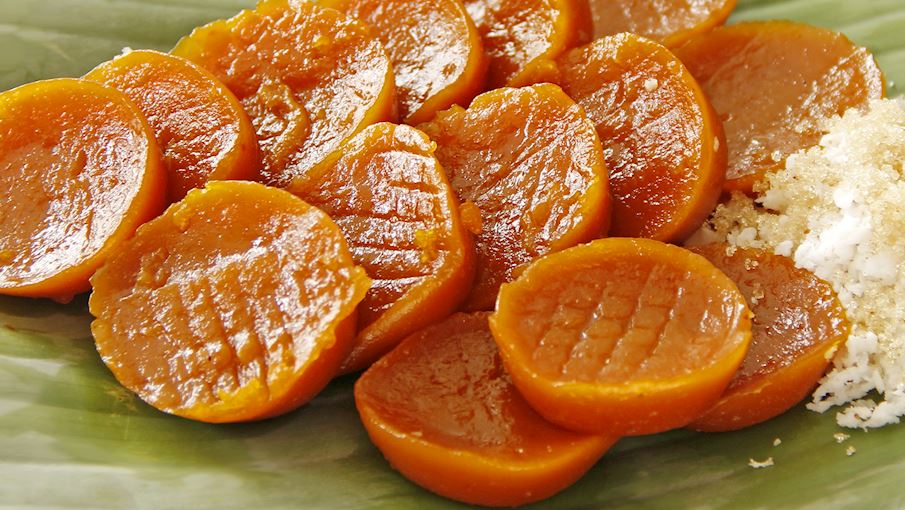
SHUTTERSTOCK
Kutsinta is a sweet Filipino delicacy made with glutinous rice flour, brown sugar, and lye water. The mixture is steamed in small round molds and it is traditionally served topped with coconut flakes. These chewy cakes are usually infused with food coloring or annatto seeds in order to achieve their typical dark brown color.
These sweet treats are usually enjoyed as a satisfying dessert or a quick afternoon snack.

Rocha's Puto & Kutsinta
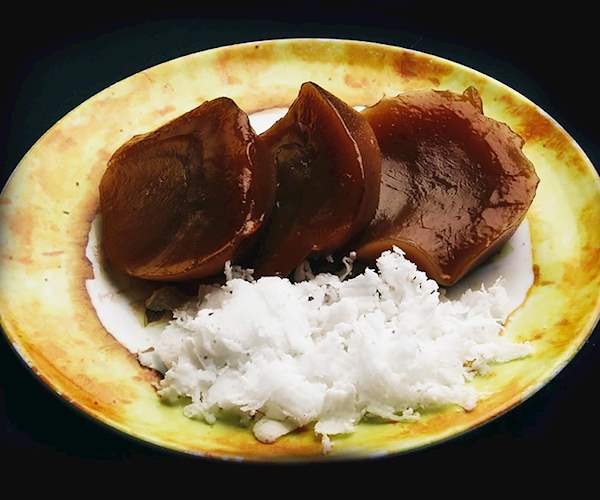
Susie's Cuisine
NOODLE DISH - Pancit palabok

SHUTTERSTOCK
Pancit palabok is a traditional Filipino dish consisting of thin rice noodles doused in a creamy shrimp-infused sauce and complemented with various toppings such as hard-boiled eggs, pork cracklings, shrimps, pork, fish flakes, and scallions. This classic is one of the most famous varieties of the traditional pancit dishes and it is considered to be an authentic Filipino invention, unlike other Chinese-influenced versions.
Even though it is commonly prepared at many Filipino households, this national favorite is typically prepared for special and festive occasions.

Little Quiapo
MEAT DISH - Bola-bola

SHUTTERSTOCK
The term bola-bola refers to the versatile Filipino meatballs. Usually made with ground beef or pork, they incorporate garlic, onions, eggs, soy sauce, and a variety of spices. These meatballs are used in tasty Filipino soups and are commonly served plain and enjoyed as a quick snack or a nutritious appetizer.
As the main dish, they are usually accompanied by sweet and sour sauce, tomato sauce, or curry sauce.
SOUP - Batchoy
The hearty batchoy is a popular Filipino soup consisting of pork offal, chicken or beef stock, and fresh round egg noodles. Generously seasoned with shrimp paste and (occasionally) soy sauce, the soup is usually topped with pork cracklings, fried garlic, and a raw egg.
Although there are numerous stories about the origin of the dish, there is no doubt that it was created in Iloilo, more specifically in the district of La Paz, from where it spread to other parts of the country to become one of the most famous Filipino soup dishes.
STEW - Giniling
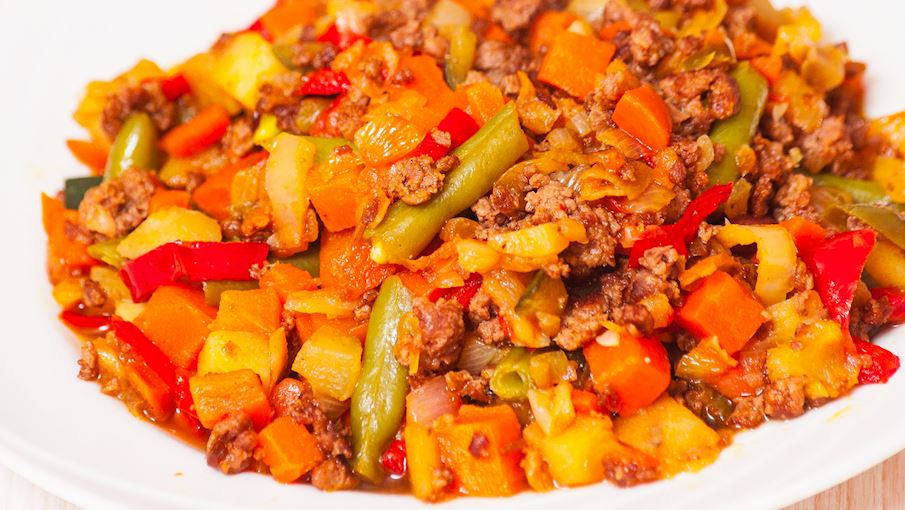
SHUTTERSTOCK
Giniling is a Filipino stew consisting of minced pork blended with a creamy tomato sauce. It usually incorporates vegetables such as potatoes, carrots, or bell peppers, while some local versions often employ peas, boiled eggs, or raisins. Simple and easy to prepare, giniling is a staple of traditional Filipino cuisine and is usually enjoyed as a nutritious lunch option accompanied by steamed white rice.
More about Giniling.

RICASHOMEYSPACE.COM
This comforting Filipino stew combines diced marinated pork, carrots, potatoes, and pork’s liver with a creamy tomato sauce. Since it is one of the national Filipino dishes, it appears in numerous regional varieties which often employ raisins, bell peppers, garbanzo beans, and red hot dog sausages.
Menudo is typically prepared for every important event in the Philippines and comes with steamed rice served on the side.
SOUP - Tinolang manok
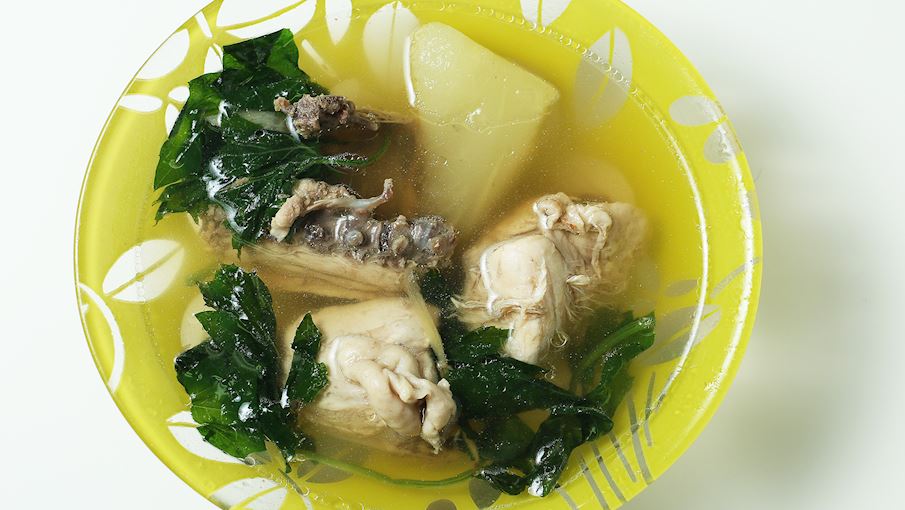
SHUTTERSTOCK
Tinolang manok or chicken tinola is a nourishing Filipino chicken soup. It can consist of various chicken cuts and internal organs cooked in a flavorful broth alongside green papaya and chili pepper or malunggay leaves. The broth is usually generously seasoned with ginger, garlic, and fish sauce, and the soup is often served over plain white rice.
Chicken tinola is a staple in every Filipino household and can be enjoyed as a starter or a hearty main course.
DESSERT - Gulaman

SHUTTERSTOCK
Gulaman is the Filipino term for agar-agar or kanten, a gum extracted from algae, but the name also refers to a broad category of Filipino dishes which are made with the same ingredient. Sharing similar characteristics with gelatin, gulaman is usually used to create various jelly-like desserts, puddings, and thick syrups.
Gulaman desserts are a staple in traditional Filipino cuisine and are often based on cream, milk, and various fruits. They may appear in numerous flavor combinations and forms. Usually served chilled, they are a perfect refreshing treat enjoyed in the hot and humid Filipino climate.
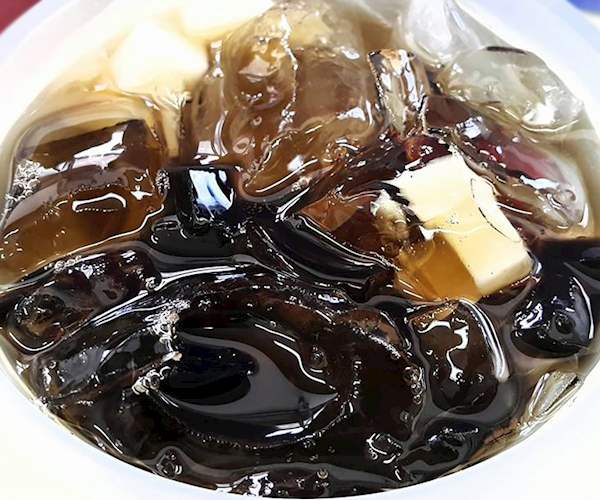
Eat Fresh Hong Kong Famous Street Food
OFFAL DISH - Proben

KALAMI CEBU
Proben (occasionally referred to as proven) is a satisfying Filipino snack, and one of the most popular street food items in the country. It is prepared with an unusual chicken organ named proventriculus, a component that is in many ways similar to chicken gizzard.
Coated in flour or cornstarch, the tiny proben pieces are shortly deep-fried until the exterior becomes golden brown and crispy. They can be fried individually and served in plastic bags, or skewered and fried on bamboo sticks. Cheap, fast, and nutritious, proben has come to represent one of the most common street food varieties in the Philippines, which is especially favored among the young students.
The snacks can be found on numerous streets and traditional markets, where they are usually prepared by street vendors who prepare heaps of fresh proben on mobile food stands. Even though they can be eaten plain, bagged or skewered versions are usually accompanied by sour vinegar sauce or sweet chili sauce.
SNACK - Kwek kwek

JUDGEFLORO
Deep-fried kwek kwek is a type of tokneneng, the omnipresent Filippino street food. While tokneneng is made with boiled chicken or duck eggs, kwek kwek is the smaller sized variety, which usually employs tiny quail eggs. Both types are distinguished by the deep orange color, provided by an unusual batter in which eggs are coated before frying.
The thick batter is made with flour, cornstarch, and water, with the addition of annatto powder, a unique ingredient which gives the dish its remarkable orange color. Hard-boiled quail eggs are thoroughly coated in batter, and fried until crispy. The essential condiment to kwek kwek is a spicy and sour sauce.

SHUTTERSTOCK
Pichi-pichi is a Filipino dessert consisting of three key ingredients: grated cassava, sugar, and water. The concoction is steamed until it develops a firm, glutinous texture, and it is then rolled in desiccated coconut. The dessert is especially popular during merienda, parties, and celebrations.
This delicate, sticky treat was originally invented in the Quezon Province.
SWEET PIE - Buko Pie
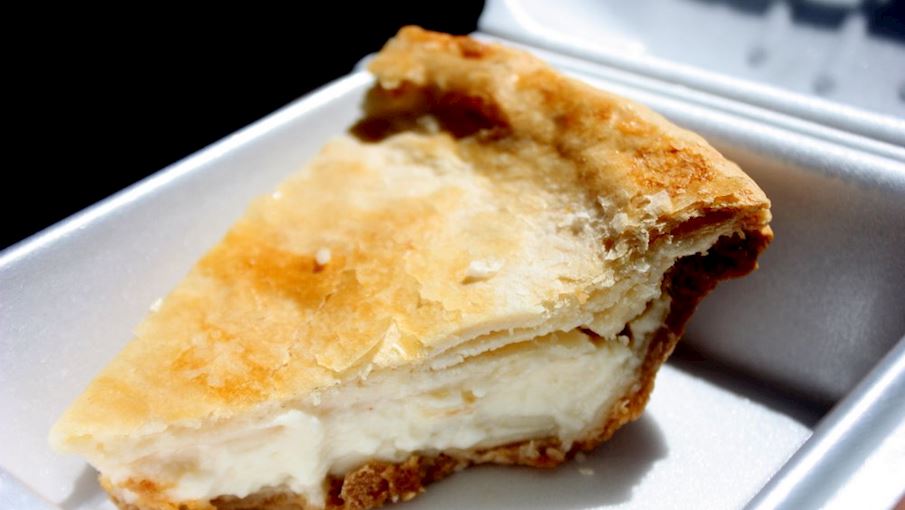
KRISTA
Buko pie is a traditional Filipino dessert which consists of a flaky pie crust combined with creamy coconut filling. It is prepared with buko, the young coconut flesh which is cooked alongside plain or condensed milk, cream, and sugar until it transforms into a thick and creamy custard.
According to popular belief, it was invented by Soledad Pahud, a native Filipino who spent some time working in the United States. After she had returned, she wanted to adapt the traditional American apple pie with locally available ingredients. Together with her family, she invented buko pie, a dessert which soon became a favorite throughout the country.
Apart from being a delicious dessert, buko pie is one of the most popular Filipino souvenirs.

Loumar's Pie & Tarts

Orient - The Original Buko Pie Bakeshop
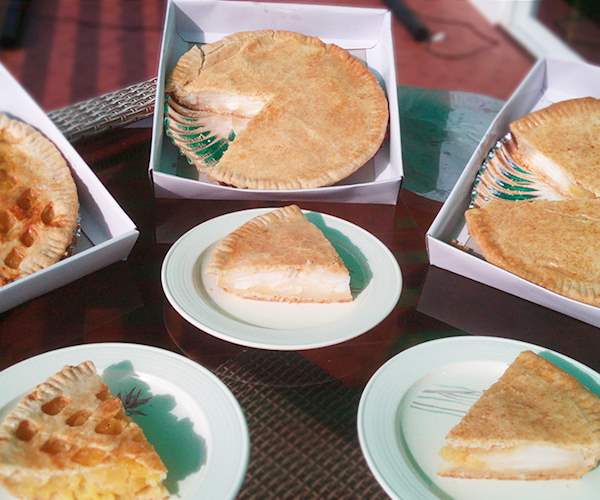
Lety's Buko Pie

Spanggo Café & Pasalubong Center
NOODLE DISH - Pancit bihon

SHUTTERSTOCK
Pancit bihon is a famous Filipino stir-fry consisting of rice noodles combined with sliced pork or chicken and various vegetables. The dish is infused with soy sauce and it is usually lightly seasoned with lemon juice. Just like other pancit varieties, this version is often found at numerous street stands throughout the country and is a staple dish served on special and festive occasions.
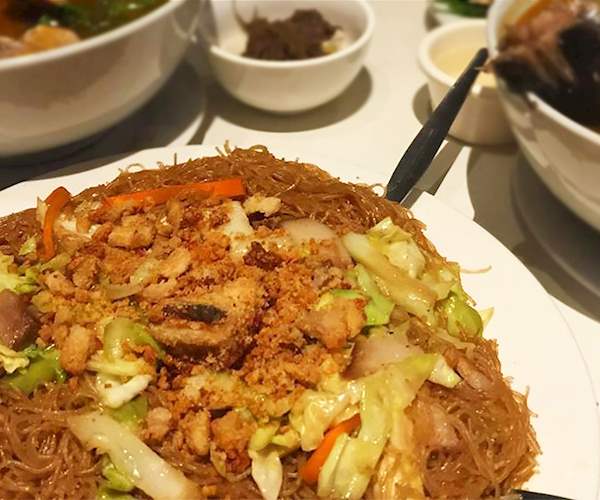
Three Sisters Restaurant

Aling Banang's
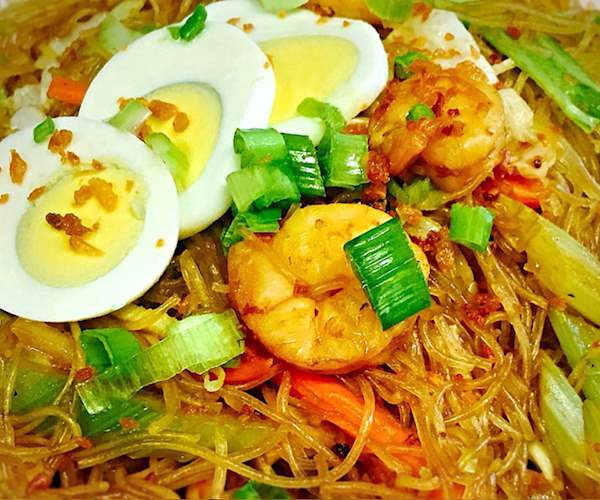
Max's Restaurant

Isaw Haus
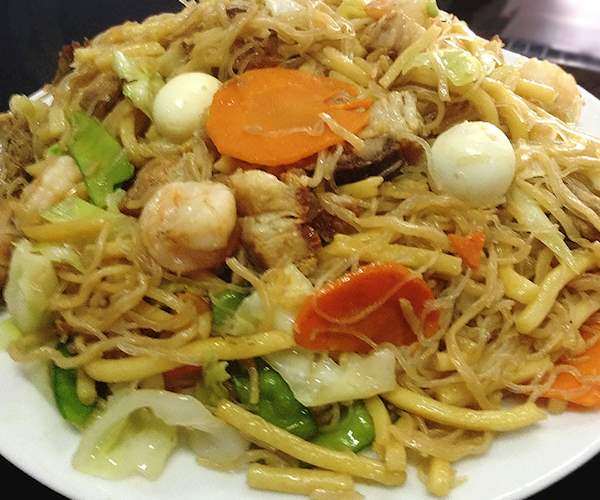
Luyong Restaurant
RICE DISH - Arroz caldo

SHUTTERSTOCK
Arroz caldo is the Filipino variety of congee, a thick rice porridge that is ubiquitous in many Asian countries. It is also one of many congee varieties found in the Philippines. Distinguished by the addition of chicken, arroz caldo is usually cooked in a ginger-infused broth and served with various accompaniments and seasonings.
Although congee is originally Chinese, this particular variety is believed to have been developed and adapted to suit the tastes of the large Spanish community that was present in the country during colonial times. This comforting rice dish is usually enjoyed as a filling breakfast or a satisfying midday meal.
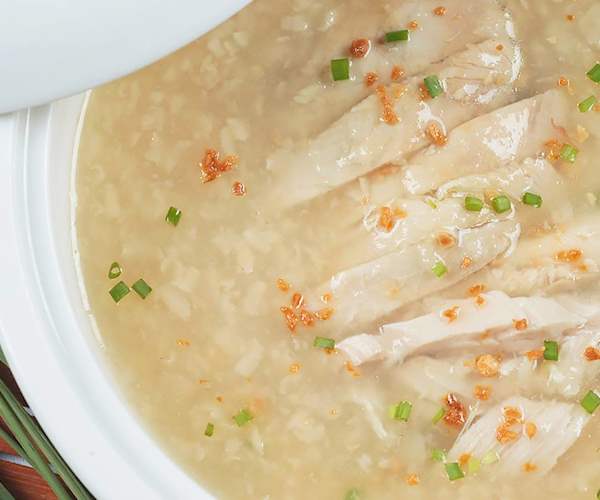
Cafe Via Mare

Razon's of Guagua
PORK DISH
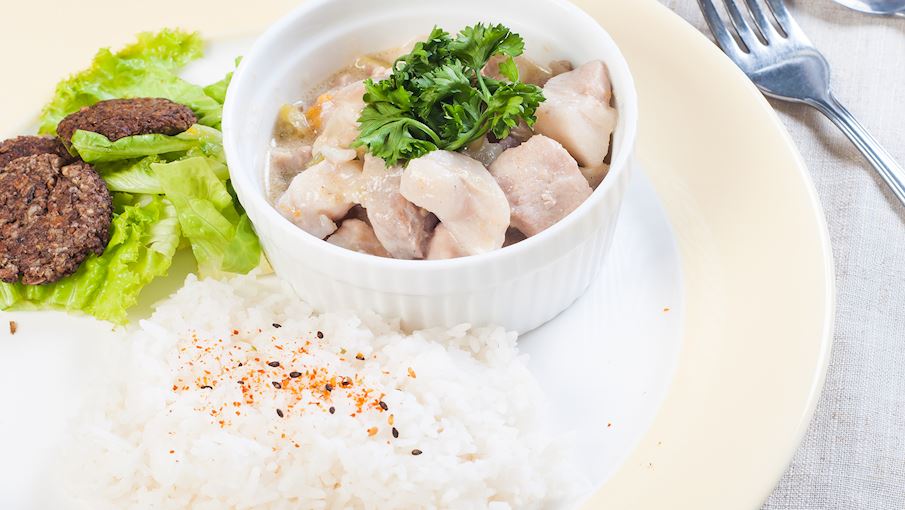
SHUTTERSTOCK
Bicol express is a popular Filipino dish consisting of sliced pork that is doused in a creamy coconut-based sauce and seasoned with shrimp paste and spicy chili peppers. According to popular belief, Cely Kalaw invented the dish in her Manila restaurant.
She was inspired by the traditional Bicolano coconut-infused dishes and named the new invention after a Filipino train service operating from Manila to the Bicol region. Creamy and spicy Bicol express is usually served with plain steamed rice on the side.

Small Talk Café
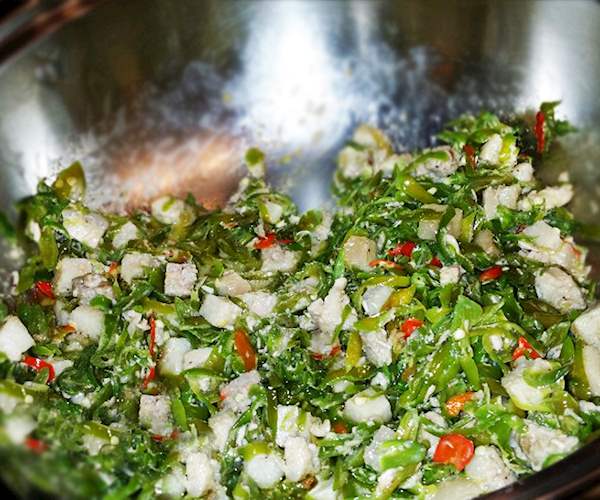
Waway's

Sibid-Sibid
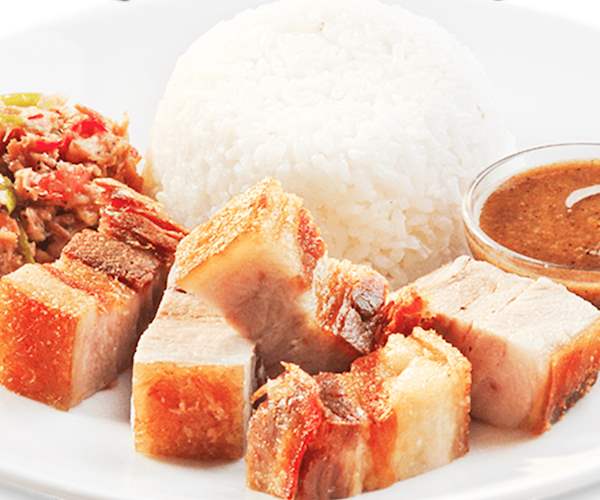
Graceland
CHICKEN DISH - Inasal na manok
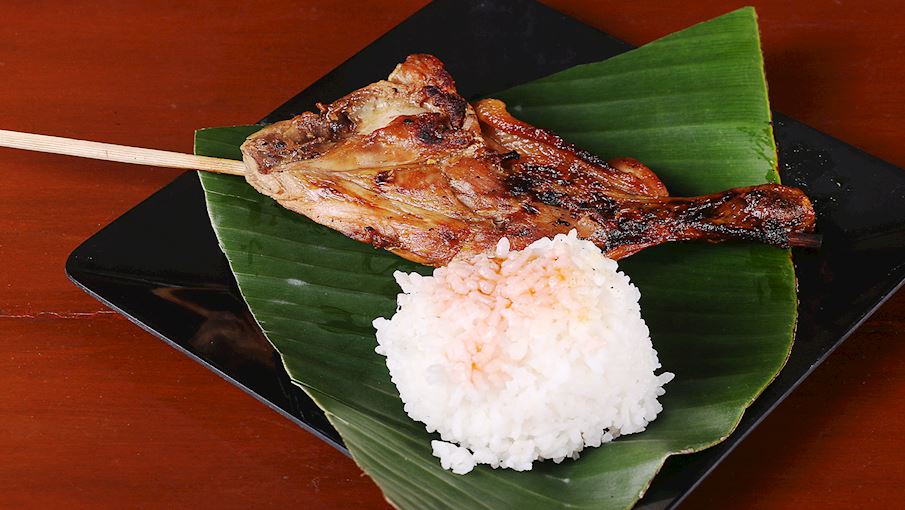
SHUTTERSTOCK
Inasal na manok is a unique Filipino grilled chicken dish which originated in Bacolod and became the signature dish of the entire Visayas region. It employs various chicken cuts marinated in a mixture of vinegar and numerous spices such as lemongrass, garlic, and ginger.
During grilling, the meat is brushed with the annatto-infused oil which provides the chicken with an appetizing golden color and a unique peppery flavor. The dish is usually served alongside annatto-flavored garlic rice and spiced vinegar.

Aida's Manokan

Nena's Beth at Manokan Country
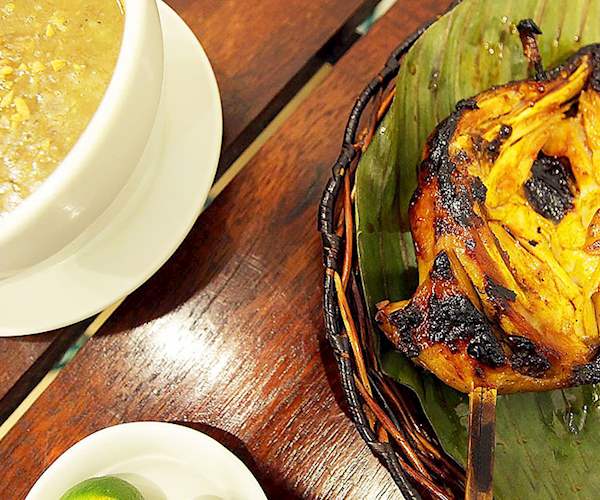
Island Chicken Inasal

Balay Dako
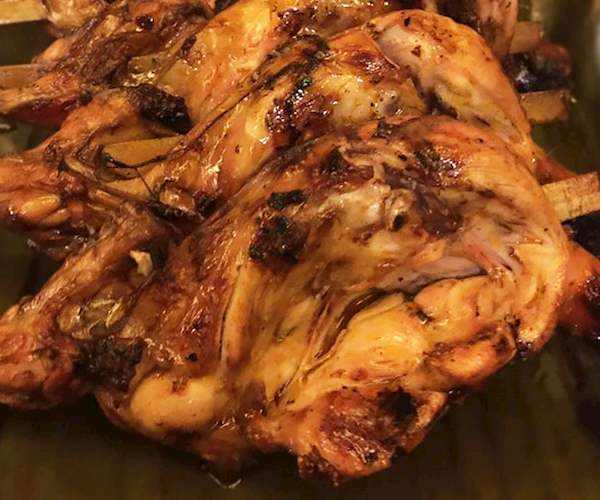
Barrio Inasal
STEW - Pinakbet
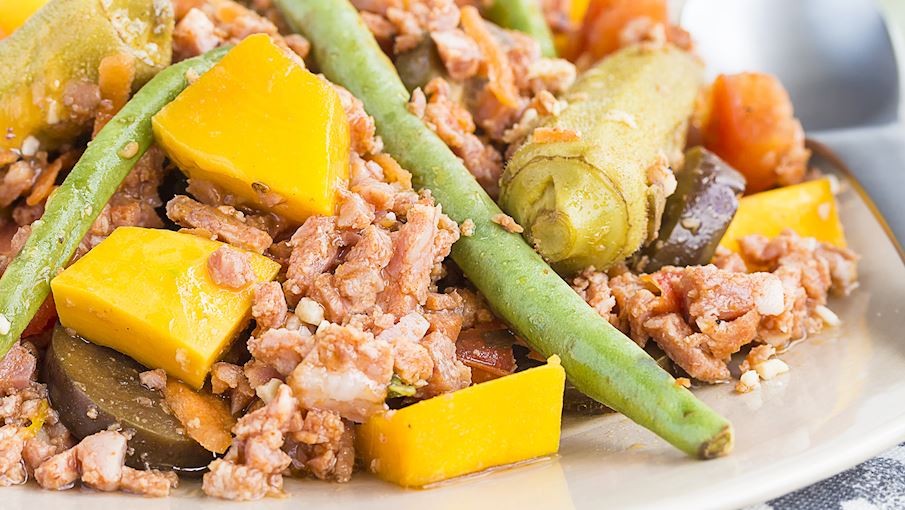
SHUTTERSTOCK
Pinakbet is a traditional Filipino meat stew prepared with various vegetables and shrimp paste. It originated in the region of Ilocos, but today it appears in many regional and seasonal varieties. Most commonly, it consists of fatty pork, bitter melon, squash, sweet potatoes, eggplants, okra, and green beans.
Although the ingredients may be adjusted to personal preferences, the key element of the dish is the pungent shrimp paste, which provides pinakbet with its unique flavor. This colorful and versatile stew is usually served alongside steamed rice and enjoyed as a hearty and nutritious main course.
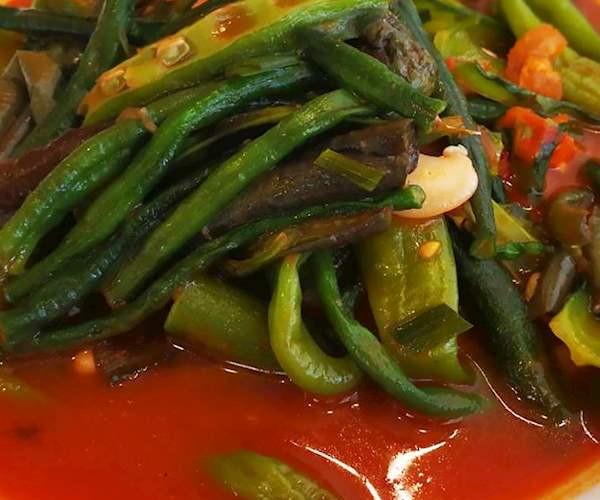
La Preciosa Restaurant

Balay Dako
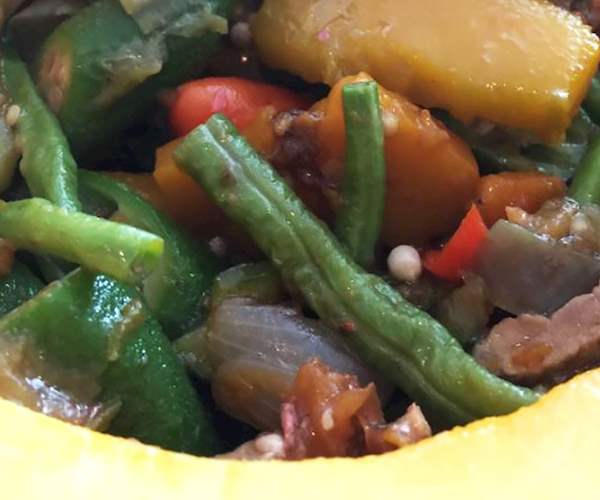
Kagay-Anon Restaurant
CAKE

CABINS & GONZ CAKES
Although undoubtedly French in origin, the decadent sans rival (lit. without rival) is a classic Filipino dessert and an all-time favorite that truly lives up to its name. It is made with layers of dacquoise; a crispy, baked nut meringue sandwiched together with the so-called pâte à bombe - a gorgeously smooth, velvety and rich French buttercream.
But unlike the French original, which is traditionally made with either almond or hazelnut meringue, the Filipino version uses toasted cashews instead. Sans rival is said to have been invented sometime between the 1920s and 1930s, when many Filipinos traveled to Europe to study, and upon returning home to the Philippines, they started employing some of the cooking and patisserie techniques they learned while studying abroad.
Later on, the Filipinos even came up with a snack version of the famous cake: silvanas or sylvanas are popular frozen cookie sandwiches, coated in cashew crumbs, and made with two cashew-meringue wafers held together with a thick layer of buttercream.

Lachi's

Sizzling Plate
STEW - Mechado
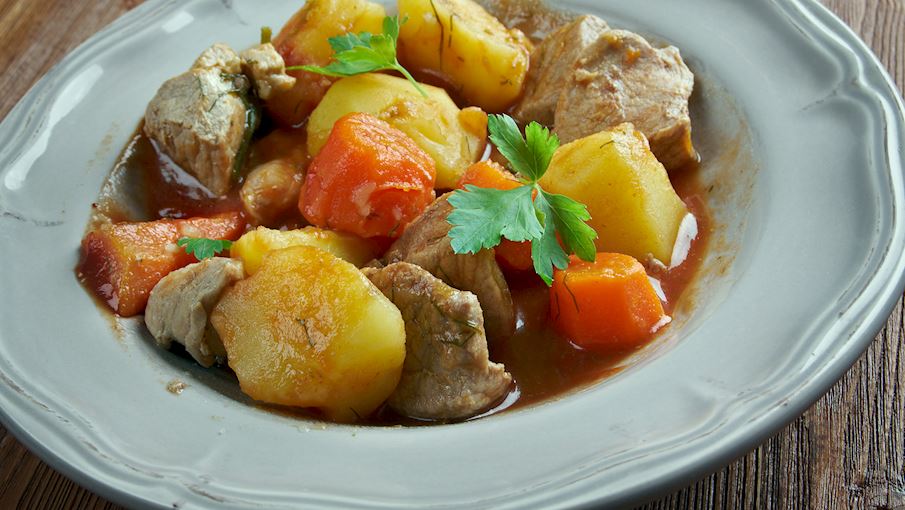
SHUTTERSTOCK
Mechado is a true Filipino fusion dish that combines chunks of pork or beef with a flavorful tomato sauce. Since tomato sauce is not a common ingredient in traditional Filipino cuisine, it is believed that mechado originated under strong Spanish influence.
Besides meat, it can also incorporate potatoes, bell peppers, carrots, and peas. Mechado is often seasoned with soy sauce or fish sauce. This thick and comforting stew is always served hot, and it is usually accompanied by plain steamed rice on the side.

The Aristocrat
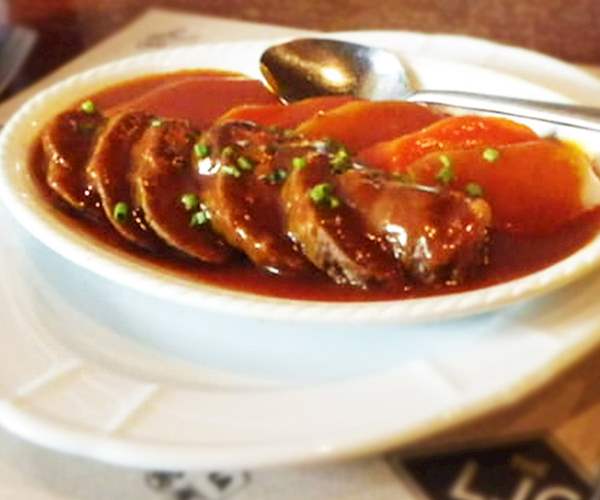
Fely J's Restaurant
STEW - Pares

SHUTTERSTOCK
Pares is a famous Filipino dish consisting of beef pieces that are slowly braised in a flavorful stock infused with garlic, soy sauce, star anise, sugar, and a variety of other spices and condiments. The thick, rich, and slightly sweet sauce and tender meat make pares one of the most popular beef dishes in the country.
The name pares translates as pairs and stems from the traditional practice of serving this satisfying stew along fried or steamed rice and a bowl of nourishing beef stock. This traditional comfort food is commonly found in many Filipino establishments which all have their signature pares recipes.

Locavore

SHUTTERSTOCK
Easy to prepare and packed with healthy vegetables, utan is a famous Filipino soup which originated in Visayan Islands. This clear vegetable soup was originally a poor man’s dish, which included any vegetables that were at hand. Nowadays, it can also include a wide variety of root vegetables and leafy greens which are merely cooked in salted water.
Occasionally, this nutritious soup can be enriched with chunks of meat or pieces of fried fish. Even though it originated as a frugal dish, today it is regarded as an extremely healthy soup that is typically prepared in many Filipino households.
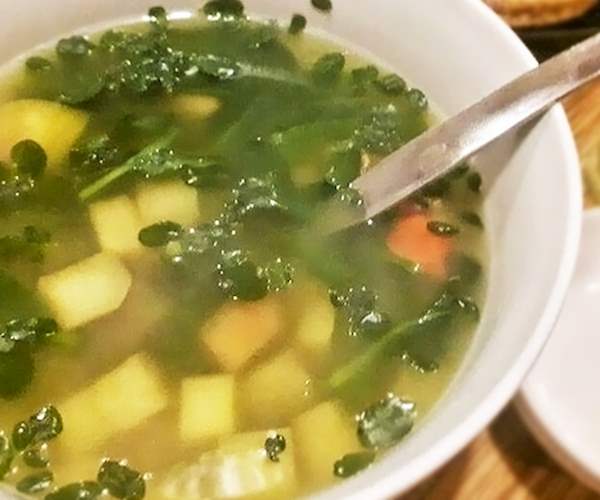
Chika-an

Lantaw Floating Native Restaurant
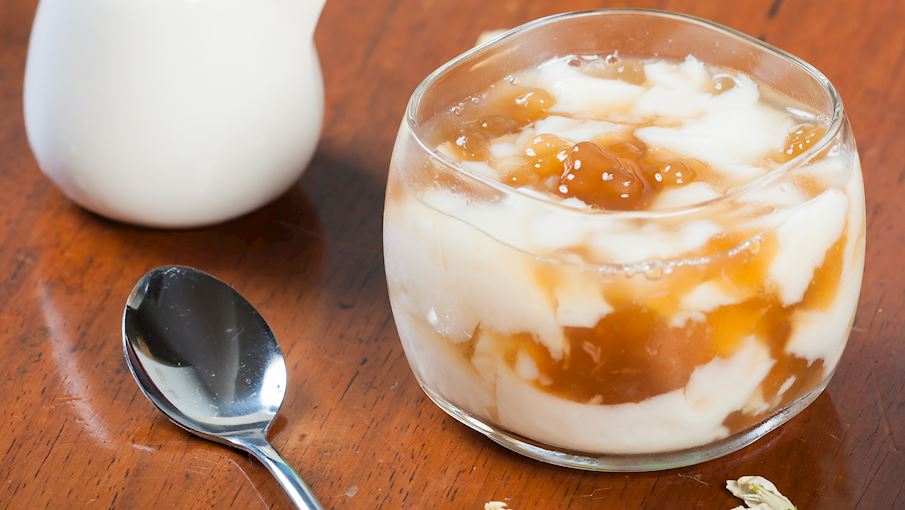
SHUTTERSTOCK
Taho is a sweet Filipino dessert which consists of fresh soft tofu doused in arnibal syrup and sprinkled with plump sago pearls. Similar desserts can be found in numerous Asian countries, and most of them call for the usage of the softest tofu variety, known as silky tofu, which has a tender and creamy texture and an incredibly soft consistency.
Shortly heated or steamed, it is covered in sweet arnibal syrup (made with melted brown sugar) and enriched with mild vanilla flavors. Usually, the dessert is topped with chewy sago pearls which are similar in appearance and texture to tapioca. Taho is usually sold by street vendors who sell this traditional delicacy in the early morning as a sweet, protein-packed breakfast.
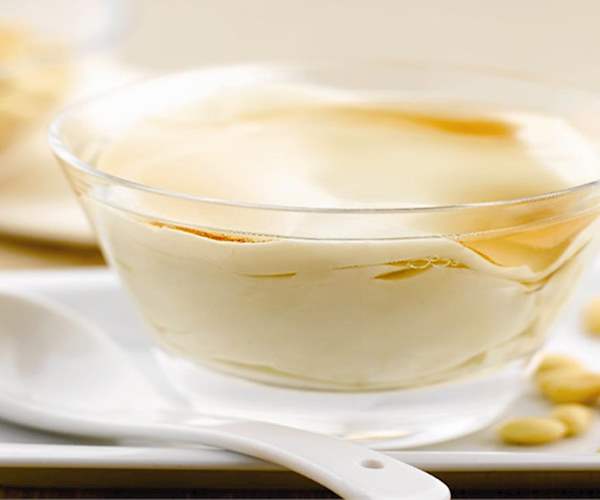
Mr. Bean

Gloria Maris
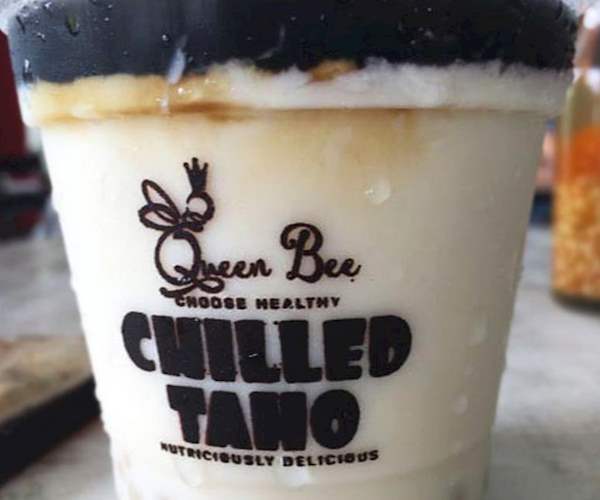
Sinangag Express

Ulli's Streets of Asia
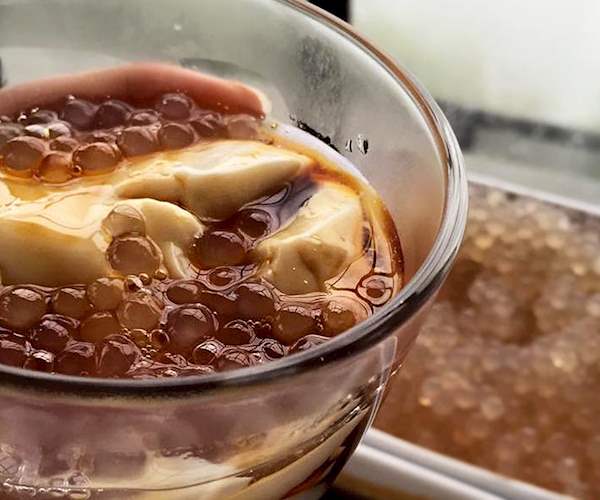
Balay Dako
FISH DISH - Daing

BINGBING ON FLICKR
Daing is a Filipino term which refers to a vast category of marinated or salted sun-dried fish. Depending on the region and the technique, daing can be produced with various types of fish that may differ in texture and moisture levels. Marinated or dried fish is used in numerous Filipino dishes as an ingredient, side dish, topping, or a condiment which gives flavor to various stewed or stir-fried dishes.
Though it originated as a preservation technique, today it is produced in many traditional Filipino households and sold at numerous markets throughout the country.
FISH DISH - Kinilaw
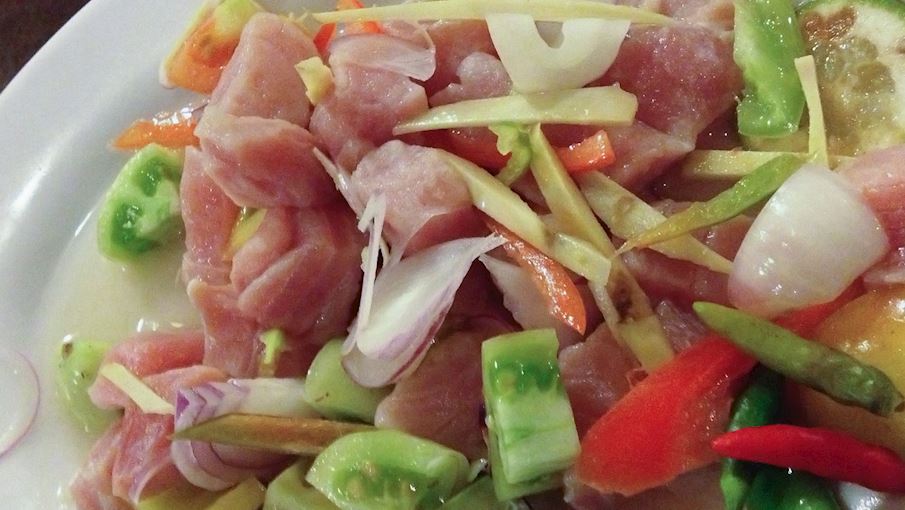
JDCGUMPAL (CC BY-SA 4.0)
Kinilaw is a Filipino appetizer made with raw, cubed fish in a dressing based on vinegar. The appetizer is typically garnished with onions, ginger, chili peppers, and garlic. Fish should be washed in vinegar, not soaked in it, turning the pink flesh into white and slightly opaque in the process.
Although kinilaw is usually consumed as an appetizer before a big meal, it can also be eaten as finger food, when it’s traditionally consumed with alcoholic beverages on the side.
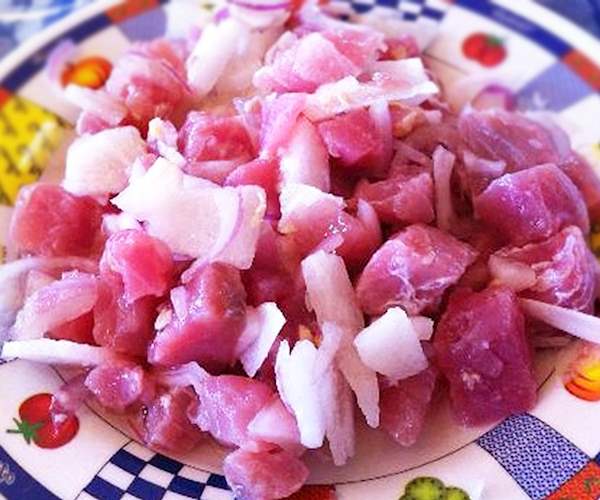
Luz Kinilaw Place
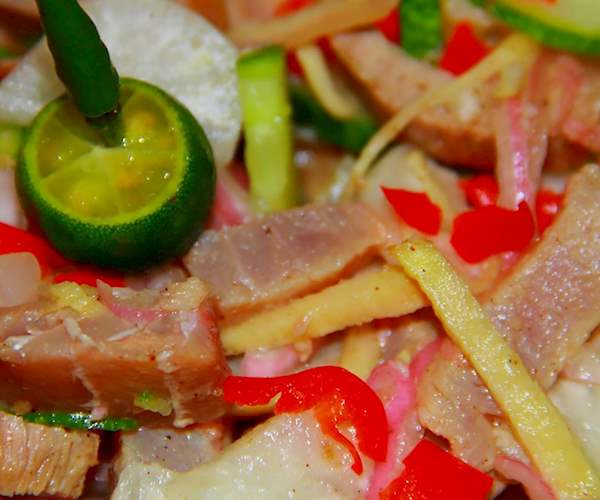
Palovince Pakfry Restaurant
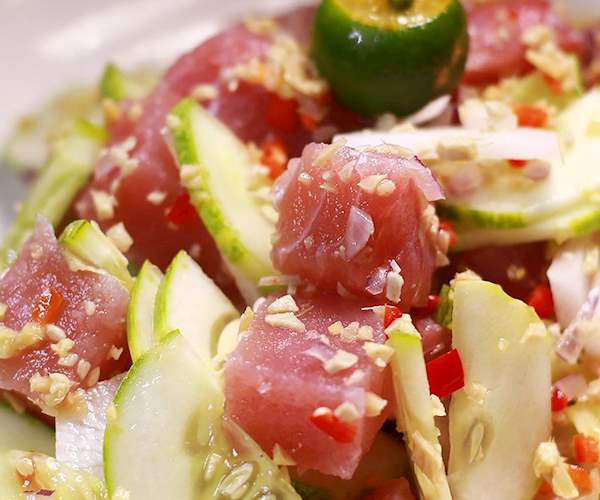
Marina Tuna

Jack's Ridge Taklobo Restaurant

Locavore
SOUP - Tinola

SHUTTERSTOCK
The term tinola refers to a vast group of hearty Filipino soups prepared with a flavorful broth infused with garlic, ginger, and fish sauce. Most commonly, the soups are made with chicken, but pork and seafood varieties are also popular.
Tinola soups can incorporate various cuts of meat and seafood ingredients which are usually cooked alongside green papaya or chayote, and chili pepper or malunggay leaves. Not much is known about the history and origin of tinola, but nowadays, they represent an irreplaceable part of traditional Filipino cuisine.
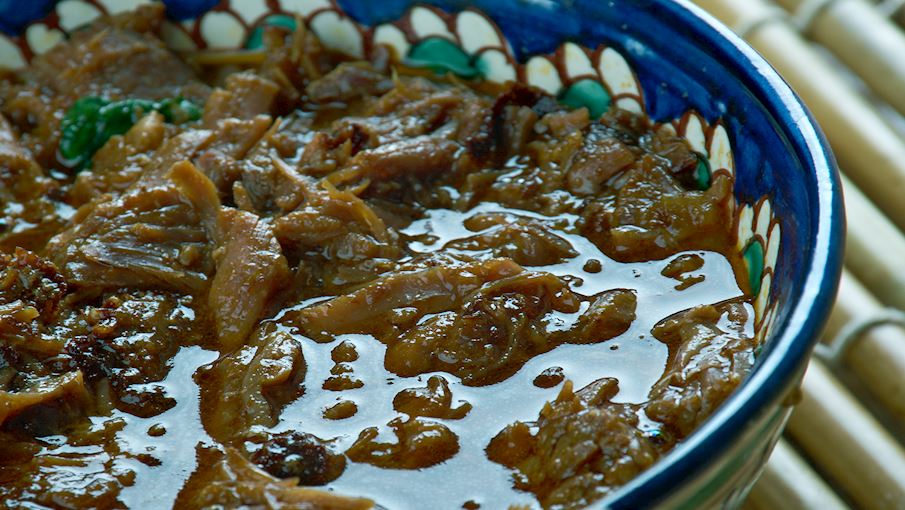
SHUTTERSTOCK
Dinuguan is a Filipino dish which consists of a variety of animal’s internal organs stewed with blood, vinegar, garlic, and hot peppers. Traditionally, it was a dish made with byproducts of pig slaughter, but many regional varieties nowadays use chicken or beef and incorporate various ingredients and spices.
This thick, flavorful stew is usually served alongside rice or rice cakes and can be enjoyed as a nutritious breakfast and a hearty lunch or dinner.
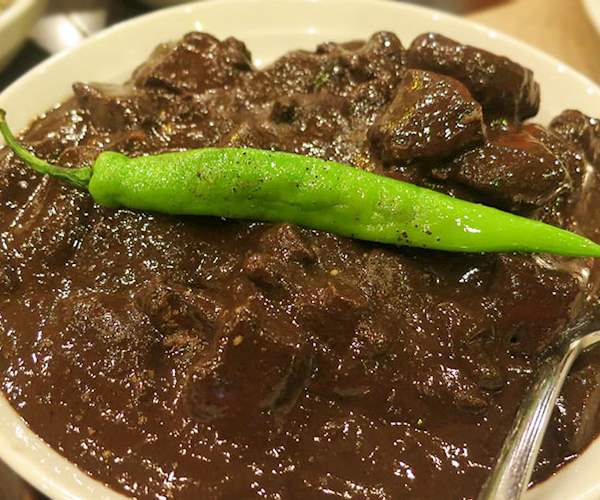
Kanin Club
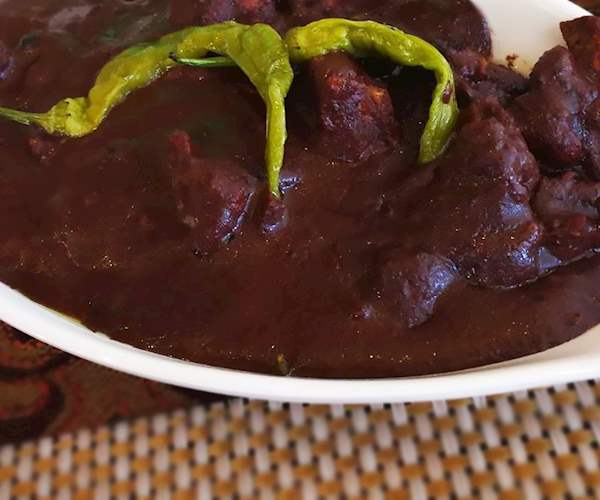
La Preciosa Restaurant
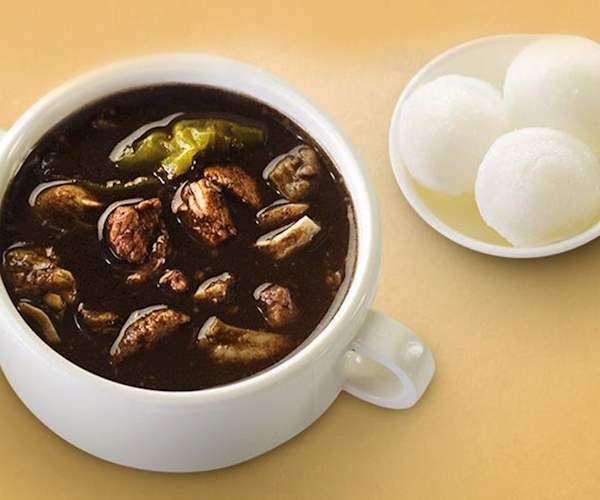
Razon's of Guagua

Hukad
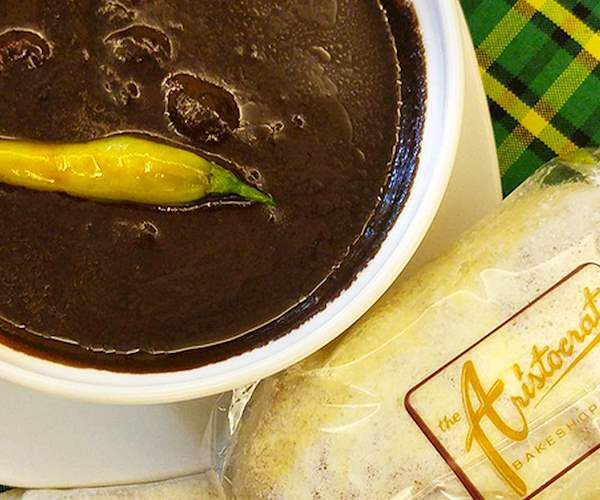
The Aristocrat
MEAT DISH - Tocino

SHUTTERSTOCK
Although the term tocino stems from Spanish, in the Philippines, the word is synonymous with sweet-cured meat, traditionally prepared with pork, and occasionally beef or chicken. Slices of meat are doused in different combination of spices and seasonings which typically include sugar, salt, rice wine vinegar, soy sauce, anise wine, and pineapple or orange juice.
Common additions to the curing mixture include saltpeter food preservative and annatto—a food dye derived from the seeds of the achiote tree that imparts color and peppery flavor. Pork tocino, also known as burong babi, is most commonly only lightly pan-fried until it caramelizes and is traditionally sided with garlic fried rice, and either sunny side up or scrambled eggs.
This combination is called tosilog, and it is a popular Filipino everyday go-to meal, typically enjoyed for breakfast, but it is also readily available at any other time of the day.
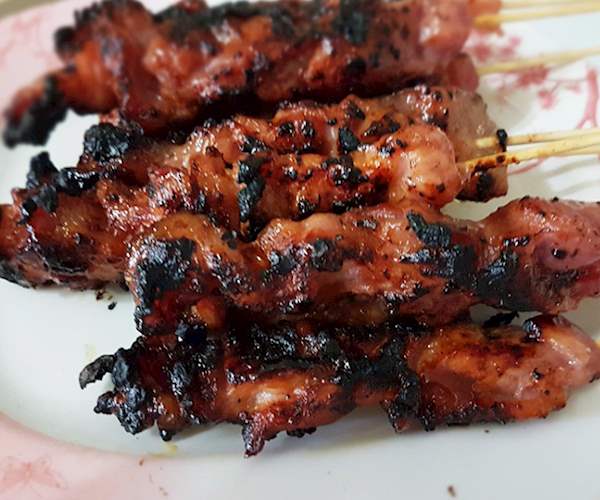
Mila's Tokwa't Baboy
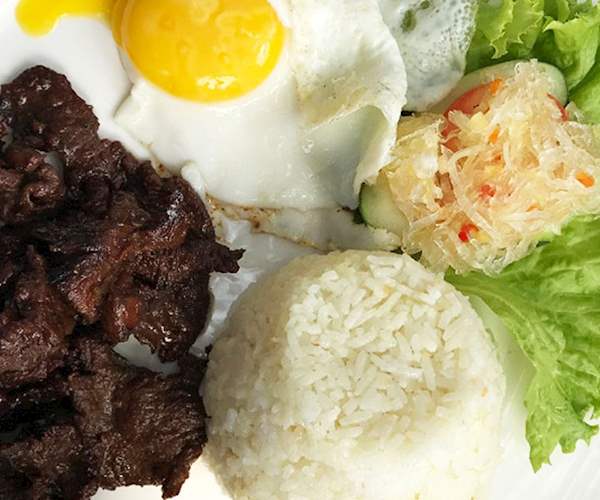
Bag of Beans Cafe and Restaurant
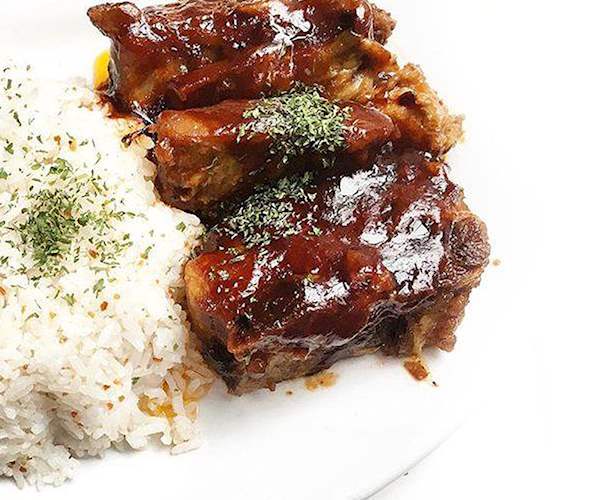
Banapple Pies and Cheesecakes

Toyo Eatery

Mary Grace Cafe
CAKE - Bibingka

SHUTTERSTOCK
In its simplest form, bibingka is a simple Filipino cake that consists of rice flour and water. It was initially prepared in clay pots that were lined with banana leaves, which would impart a distinctive, smoky flavor to the dish. Bibinka is believed to have appeared under the foreign culinary influence, and the first written reference describing a similar cake dates back to 1751.
Through history, bibinka was adapted with additional ingredients, and nowadays it is typically prepared with milk, eggs, coconut milk, and butter, while modern variations may include anything from grated cheese, salted duck eggs or grated coconut, and a variety of different sweet and savory toppings.
This original Filipino delicacy is usually associated with Christmastime, and it is traditionally enjoyed after the mass on Christmas Day.
PICKLING - Atchara

SHUTTERSTOCK
Atchara is the famous Filipino green papaya pickle usually enjoyed as a condiment alongside authentic Filipino dishes. Next to long strips of unripe papaya, it can employ a variety of other vegetables such as carrots, onions, daikon radish, and bell peppers or chili peppers.
It may also include pineapple chunks or sweet raisins. The vegetables are occasionally grated, but more commonly julienned, which gives atchara an unusual, crispy texture. The heated marinade, which combines vinegar, sugar, ginger, garlic, salt, and peppercorns, is poured over the vegetables, and the relish is pickled until all the flavors develop.
With its crispy texture and a refreshing combination of sweet, sour, and spicy flavors, atchara is the perfect complement to heavier Filipino dishes such as fried beef, sausages, or grilled chicken.
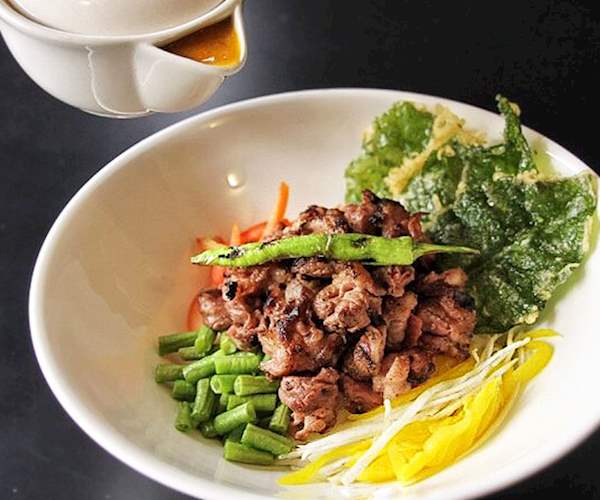
Neil's Kitchen
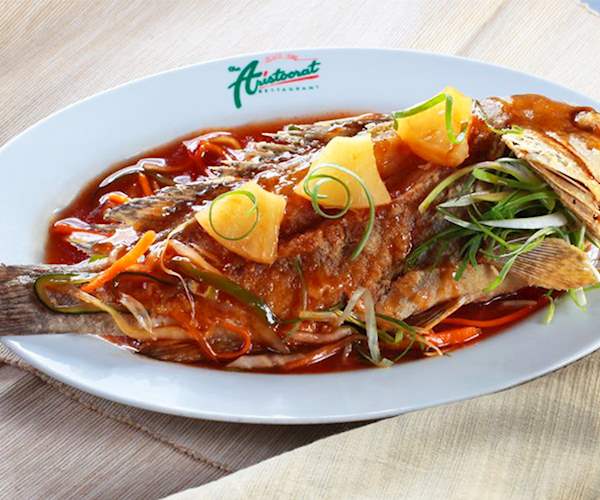
The Aristocrat
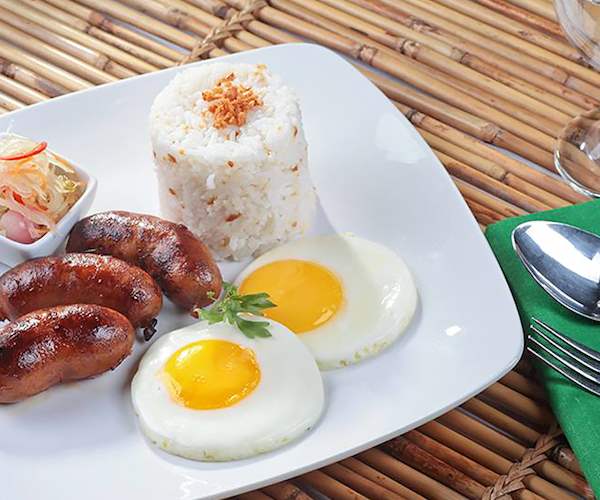
Cafe Via Mare
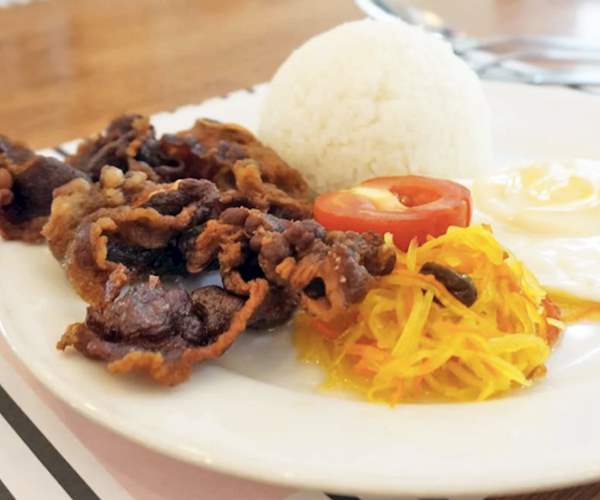
Mom & Tina's Bakery Cafe

Tapa King
DESSERT - Puto

SHUTTERSTOCK
The lightly sweetened puto are popular Filipino steamed rice cakes traditionally consisting of finely ground soaked rice that is steamed in round containers and served sliced. The popularity of these versatile cakes has caused the development of many modern puto varieties, which often vary in texture, color, shape, size, and flavor.
Because of their neutral flavor, they can be enjoyed as a quick snack or a dessert, but they are also served as an accompaniment to savory dishes such as hearty Filipino stews.

Nathaniel's Bakeshop

Neil's Kitchen
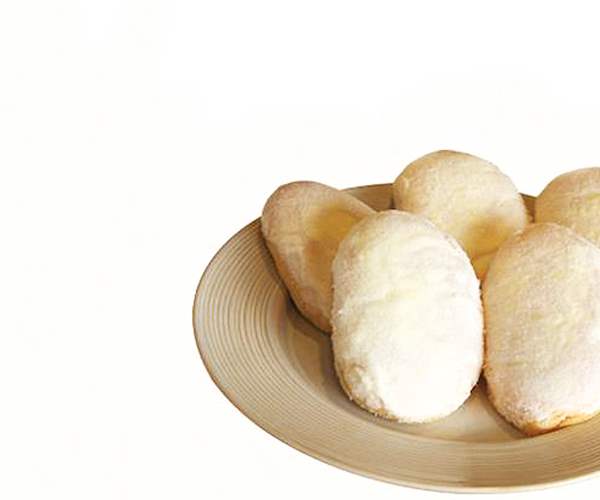
BREAKFAST - Tapsilog
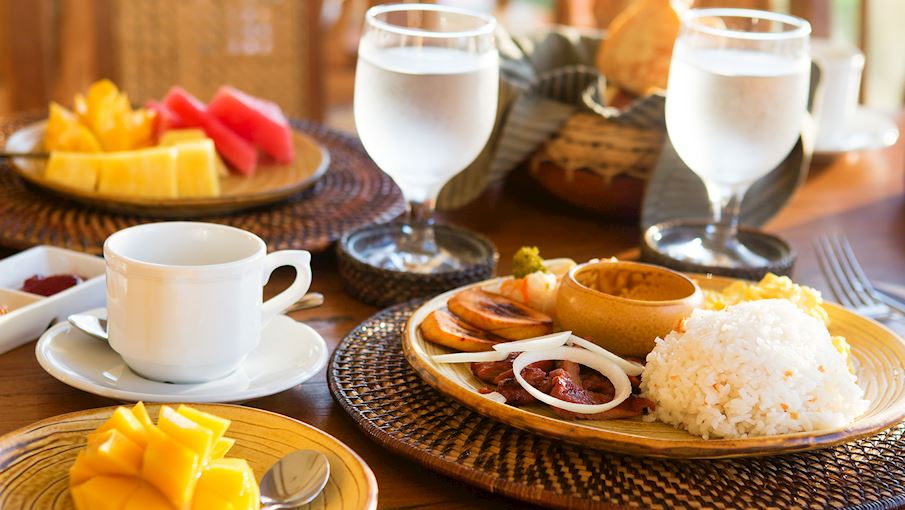
SHUTTERSTOCK
One of the most common breakfast staples in the Philippines is tapsilog, a plate which consists of sliced beef jerky, known as tapa, a heap of garlic rice, and a fried egg. It is believed that the dish grew out of necessity, to cater to the needs of many workers who were in search for a quick, cheap, and nutritious breakfast.
Eventually, tapsilog was incorporated on the menus of many Filipino fast food chains and specialized tapsihan eateries. Nowadays, it appears in numerous varieties, and even though it is still a favorite Filipino breakfast it can be enjoyed at any time of day or as a satisfying late night snack.

Tapsi ni Vivian

Maty's Tapsilog & BBQ
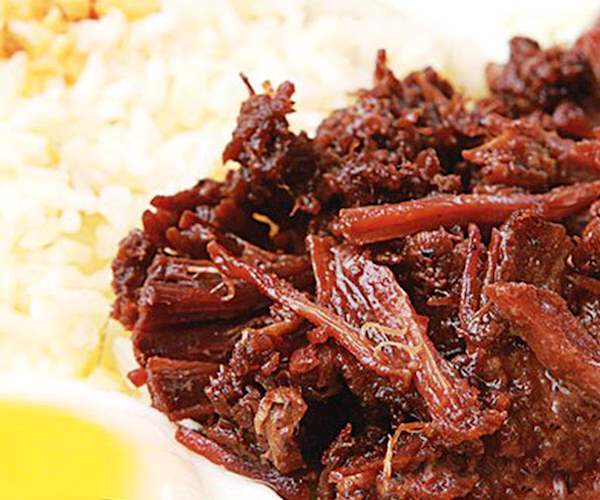
Sinangag Express

Rodic's Diner
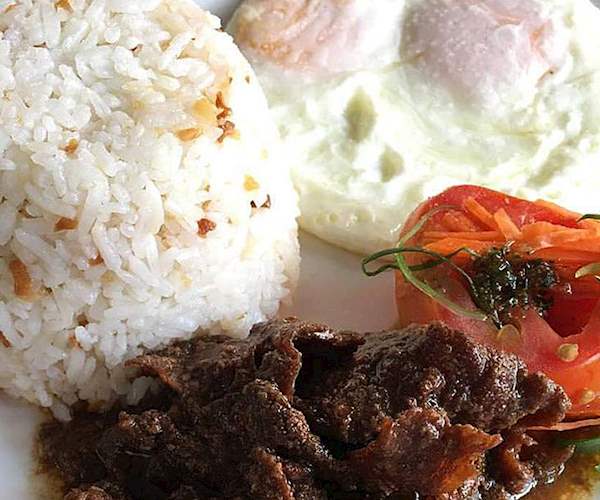
Kanto Freestyle Breakfast
OFFAL DISH - Isaw

SHUTTERSTOCK
Isaw is a popular Filipino street food dish consisting of marinated, boiled, and grilled chicken and pork intestines which are usually coiled and skewered on a stick. Although similar, pork isaw is typically slightly larger and chewier than the chicken version.
The marinade is usually prepared with soy sauce, oil, ketchup, garlic, and seasonings. Thoroughly cleaning and boiling the intestines before they are placed on a grill is an essential part of the preparation process because it eliminates all food-born pathogens. READ MORE

Sarsa Kitchen + Bar
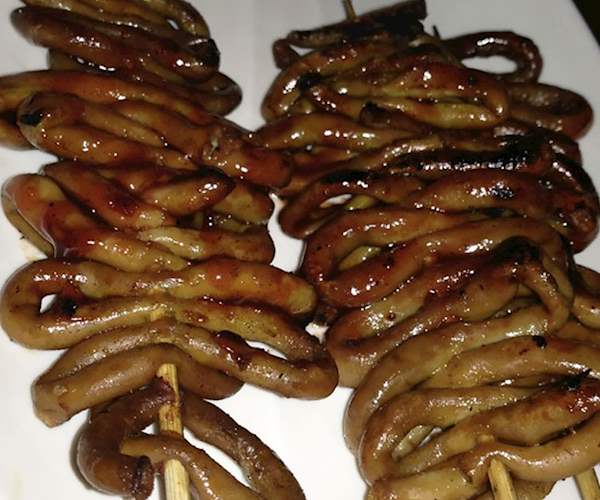
Isaw Haus
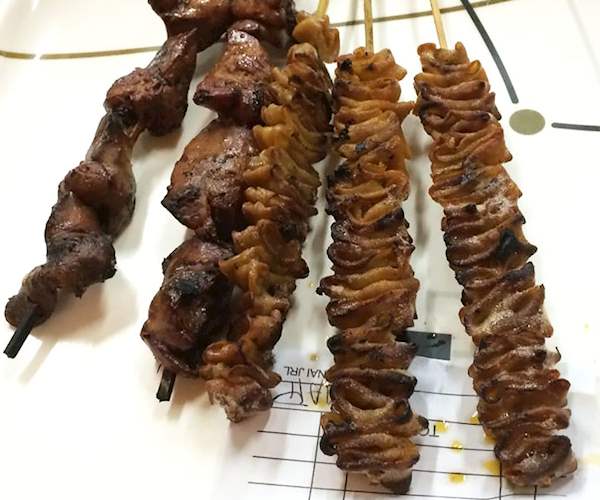
Nena's Beth at Manokan Country
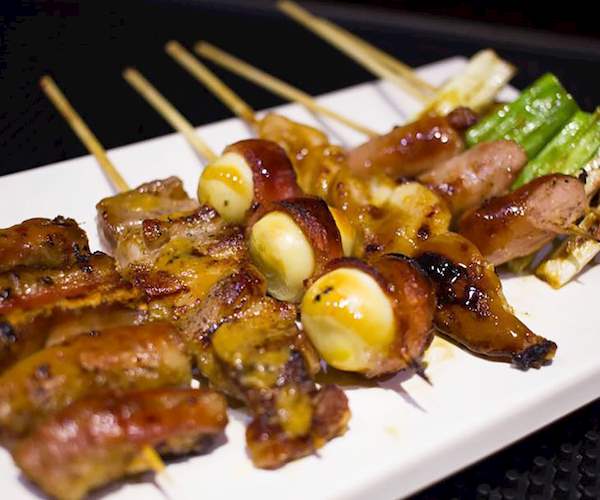
Tambai Yakitori Snackhouse

Lola Ote
SNACK - Butsi

SHUTTERSTOCK
Butsi balls are the Filipino version of traditional Chinese jian dui sweets. They are made with glutinous rice flour that is formed in small round shapes and stuffed with a variety of sweet fillings such as sweetened mung bean, creamy lotus, red bean paste, or shredded coconut.
Butsi are usually coated in sesame seeds and fried until golden. Even though they originated as a traditional Chinese delicacy, their Filipino adaptation has become incredibly popular. With their crispy shell, chewy texture, and creamy filling, they can be enjoyed as a satisfying dessert or a quick sweet snack.

Xin Tian Di
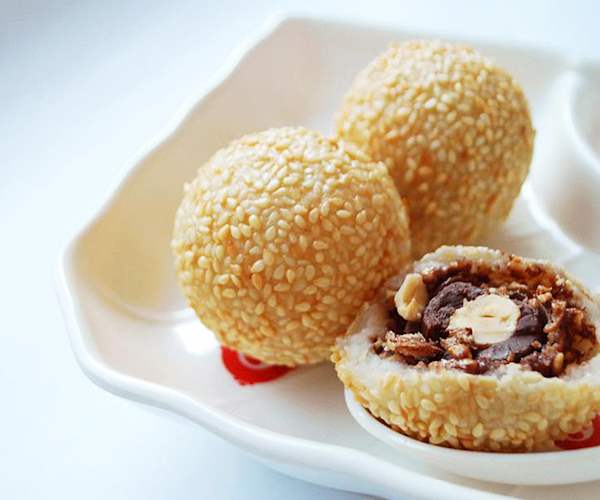
XO Kitchen
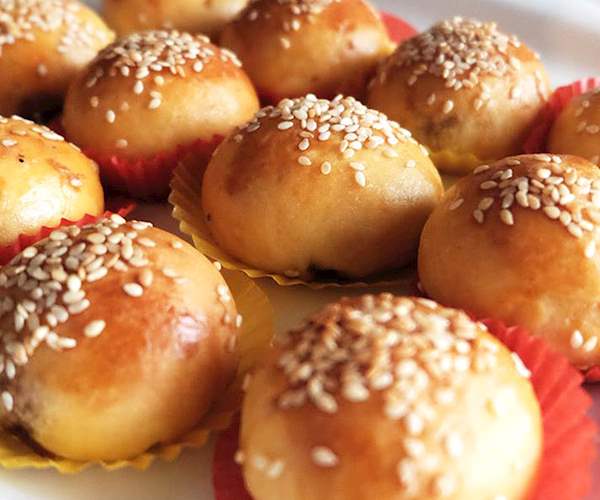
Lotus Court
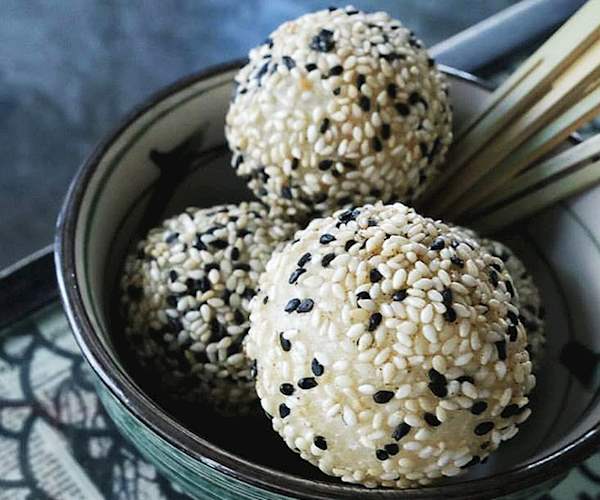
Pink Panda
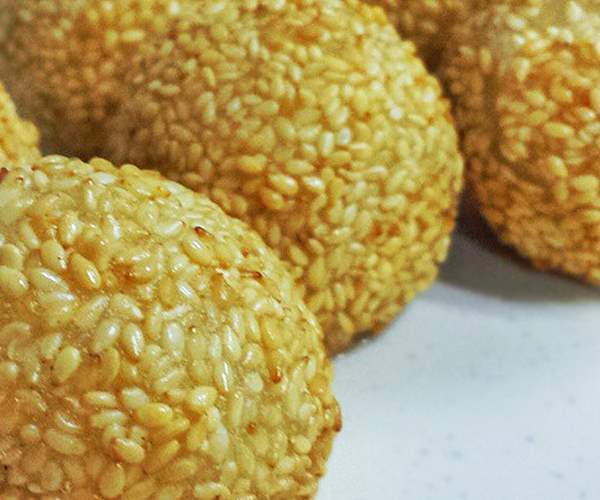
Wai Ying
NOODLE DISH - Pancit canton

SHUTTERSTOCK
Pancit canton is a Filipino dish of Chinese origin which combines yellow wheat noodles and a variety of meat, seafood, and vegetables, blended with a flavorful mixture of soy and oyster sauce. The ingredients are easily adjusted to taste, availability, and preference and can be prepared separately or shortly stir-fried alongside noodles.
Since long and thick noodles symbolize long and prosperous life, this versatile and colorful dish is usually served on special occasions, such as various celebrations and birthday parties.

The Aristocrat

Orchid's Drive Inn

Ramon Lee's Panciteria
ICE CREAM - Sorbetes
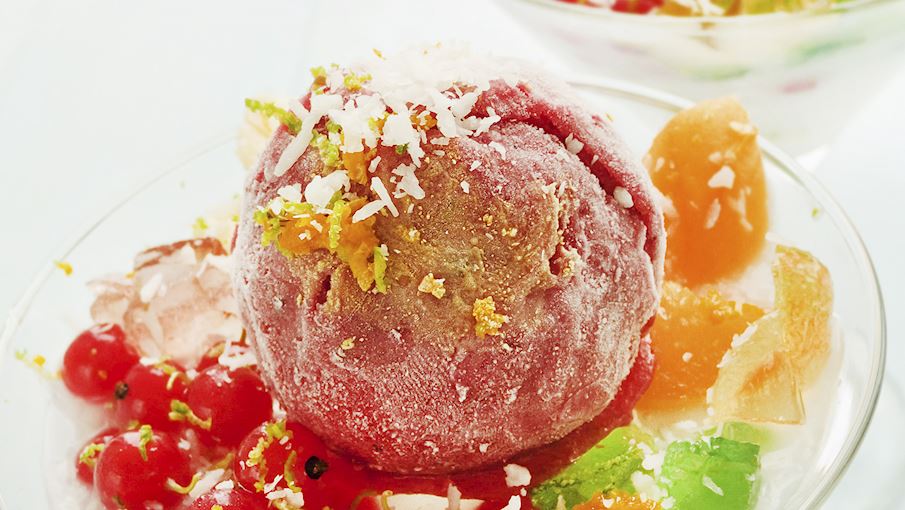
SHUTTERSTOCK
Sorbetes is a popular Filipino ice cream flavored with ingredients such as mango, chocolate, cheese, coconut, and purple yam (ube). Traditionally, it is produced from carabao milk and served in tiny scoops on sugar cones. Some Filipinos like to consume it sandwiched between bread buns, like a hamburger.
Although it sounds similar to a sorbet, coming from the Spanish sorbete, it is not a sorbet, but a dirty ice cream, as the locals jokingly call it due to the fact that it is sold along polluted streets. Sorbetes can usually be found at numerous street carts throughout the Philippines.
STREET FOOD - Balut

MARKO FEREK
Balut is a popular, although unusual Filipino delicacy, served everywhere from street stalls to upscale restaurants. It is a duck egg that has been hard-boiled, fertilized, and incubated. Traditionally, the cooked embryo is consumed straight from the shell.
It is considered an aphrodisiac that is commonly paired with a cold beer on the side. The dish can be seasoned with chili, garlic, vinegar, salt, lemon juice, ground pepper, and mint leaves. It can also be cooked in omelets or used as a filling for pastries.
Although balut is closely associated with Filipino cuisine and has achieved popularity throughout the world, it is still considered a poor man's meal in the Philippines.
PORK DISH - Lechon kawali
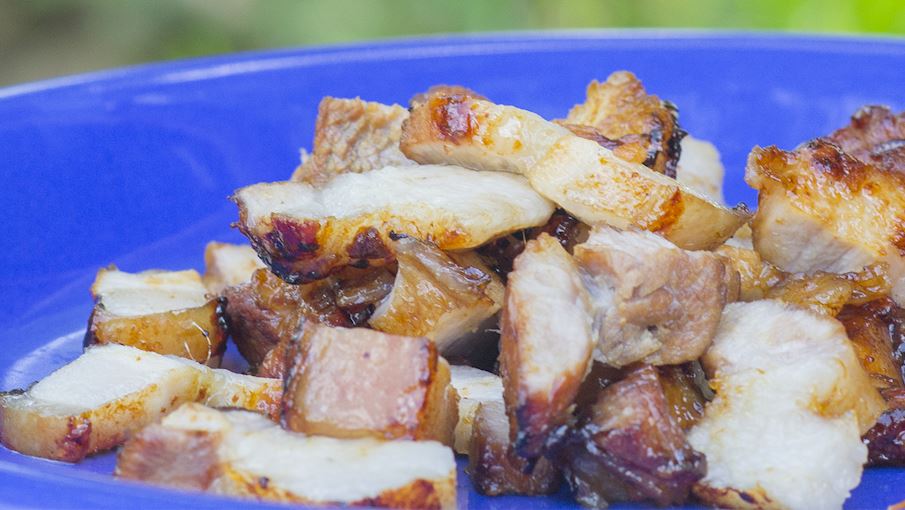
SHUTTERSTOCK
Lechon kawali is the Filipino version of deep-fried pork belly. Primarily boiled in plain or seasoned water, the meat is rubbed with salt, cut into chunks, then deep-fried until it develops a golden-brown, crispy skin, but remains juicy and tender on the inside.
It is one of the most famous Filipino dishes eaten throughout the country. Always served hot, lechon kawali is usually accompanied by spicy vinegar sauce or a traditional lechon liver sauce on the side.

Victorino's Restaurant
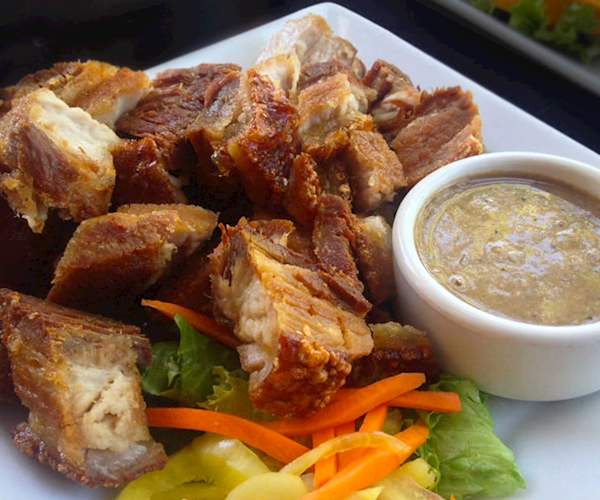
Max's Restaurant

Balay Dako
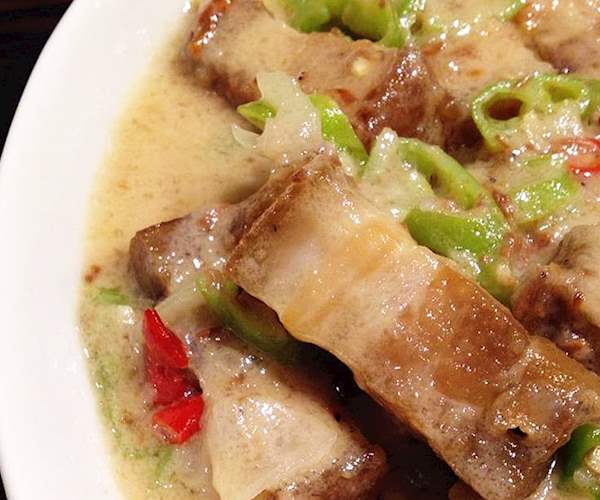
Ang Bistro Sa Remedios
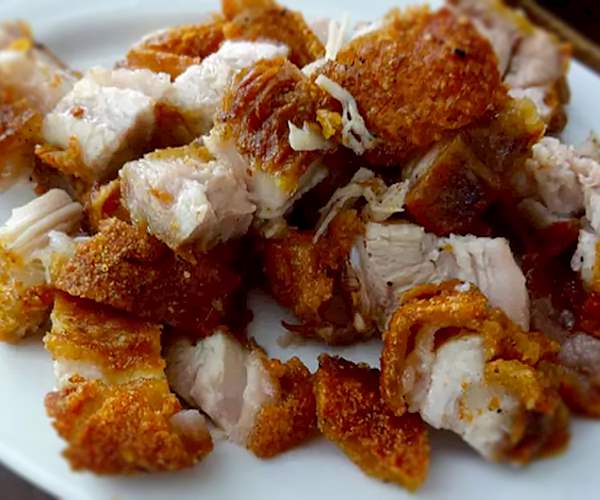
Marjo's Pochero
ICE CREAM - Halo-Halo

SHUTTERSTOCK
The refreshing halo-halo (lit. mix-mix) is a summer dessert or a snack of mixed fruit and beans, topped with finely crushed ice and either milk or ice cream. Some of the most common halo-halo ingredients include bananas, jackfruit, coconut, sweet potatoes, red mung beans, chickpeas, sugar palm fruit, purple yam jam, leche flan, and - in recent times - even sweet corn or corn crisps.
Originally, halo-halo desserts were sold by Japanese vendors in halo-halo parlors or at numerous street stalls before the occupation of the Philippines in the 1940s. In fact, this Filipino specialty is often said to have been inspired by a shaved-ice cooler called anmitsu, another Japanese summer drink.

Razon's of Guagua

Kabigting's Halo Halo

Aling Foping's Halo-Halo
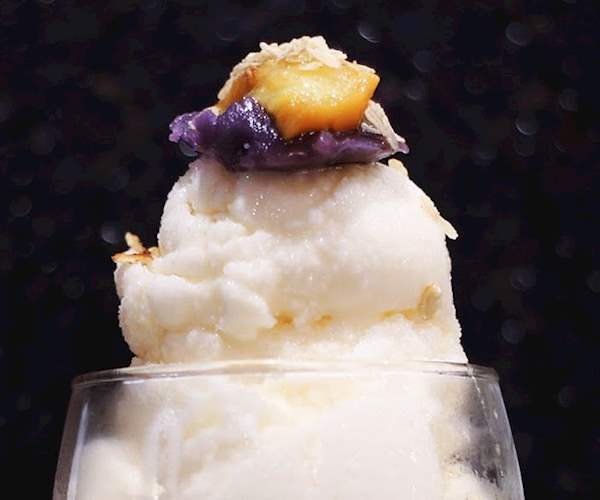
Marison's
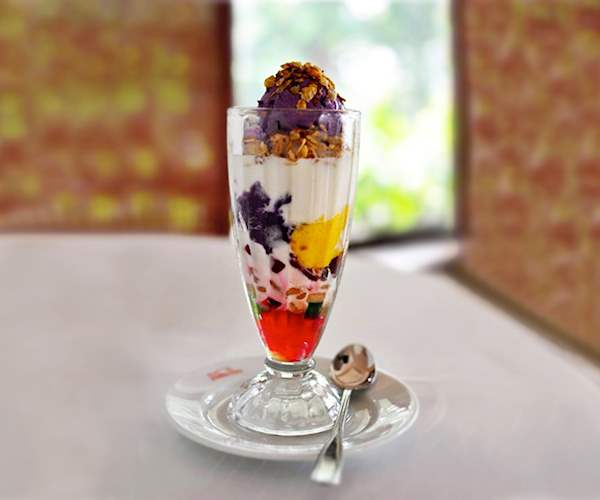
Milky Way Cafe
DEEP-FRIED DESSERT - Turon

SHUTTERSTOCK
Falling in the group of popular lumpia snacks, turon is the famous Filipino treat made with saba plantains and jackfruit. The fruit is sliced lengthwise, dusted in brown sugar, enclosed in thin wheat wrappers, then fried until golden and crispy.
Like other lumpia varieties, turon was also developed from the Chinese spring rolls and represents one of the most common sweet versions of the dish. Before it is served, it is commonly drizzled with caramel or sprinkled with roasted sesame seeds.
It is usually sold by Filipino street vendors and enjoyed as a sweet snack or a satisfying dessert.
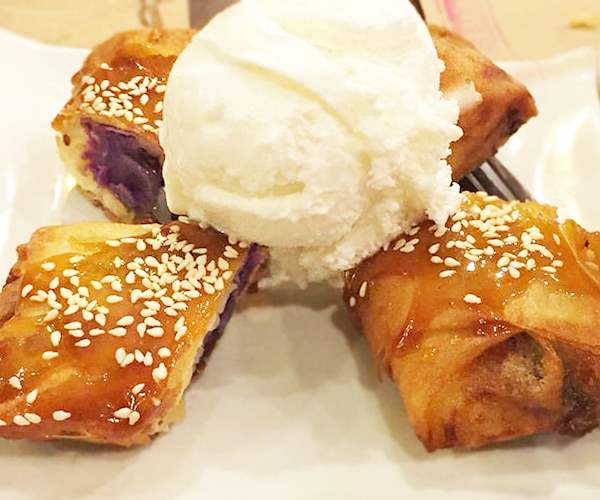
Kanin Club

Smokin’ Hot BarBQ
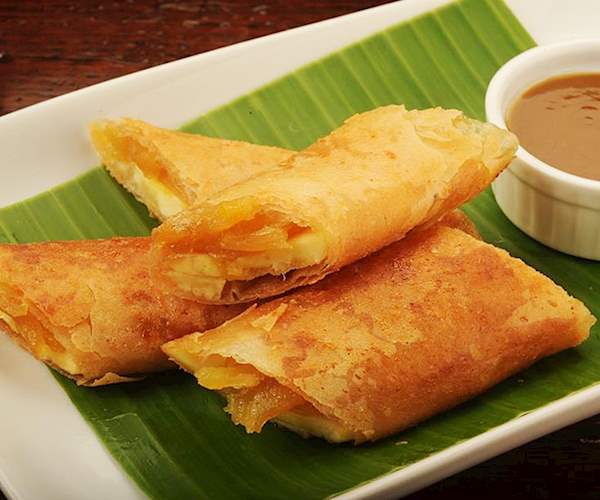
Ang Bistro Sa Remedios
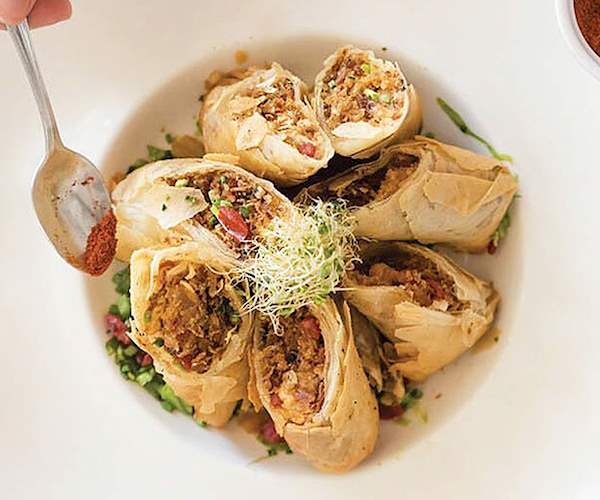
Pino Restaurant
SOUP - Sinigang

SHUTTERSTOCK
Sinigang is a sour Filipino soup consisting of sampalok (fruits of the tamarind tree), water spinach, green pepper, cabbage, broccoli, eggplant, diced tomatoes, sliced onions, ginger, green beans, water, oil, and salt. The basic broth usually consists of rice washing, with the addition of a souring agent.
Ingredients such as pork, fish, milkfish, shrimp, chicken or beef may also be added to the soup. Sinigang is traditionally served hot and steaming as a main dish, with rice as its accompaniment. It is an often seen dish at special occasions such as birthdays or weddings, and over time, as the dish became more popular, there were new variations that used guava or raw mango instead of sampalok and each region developed their own version of the popular soup.
With its sour lightness perfectly matching the harsh tropical heat of the country, sinigang is a unique soup that is a true representative of Filipino cuisine.
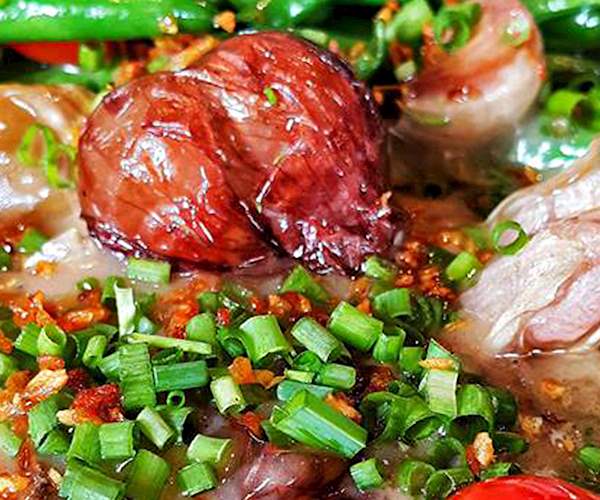
Locavore

Sentro 1771
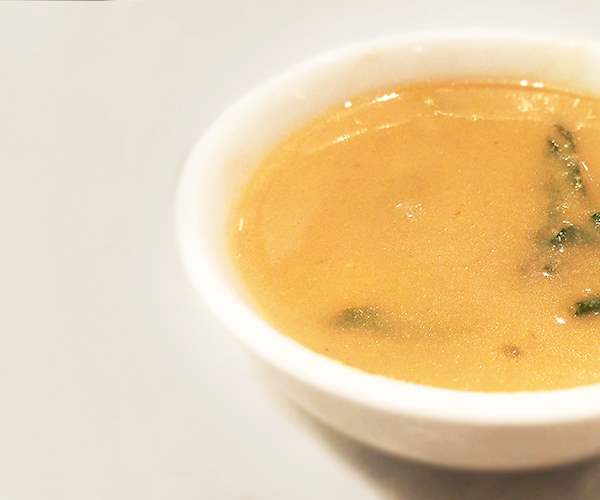
Fely J's Restaurant
BREAKFAST - Silog

SHUTTERSTOCK
Silog refers to a group of Filipino dishes that are traditionally served for breakfast. The name is an abbreviation for sinangang at itlog, meaning fried garlic rice and eggs. The difference between each of these dishes is in the additional component that's served with the garlic rice and eggs, such as tapa (sliced meat), longganisa sausages, tocino bacon, bangus milkfish belly, chorizo, hot dogs, pork chops, Spam, fried chicken, or beefsteak, among others.
It is believed that the first type of silog was tapsilog, invented in the 1980s in Marikina City. These breakfast items are so popular that they can nowadays be found in fast food chains, hotels, and restaurants.

Rodic's Diner

Kanto Freestyle Breakfast
STEW - Pinangat

RINGER
Pinangat is a popular Filipino stew that is prepared in two main versions. The sour version is prepared with fish, bilimbi, tamarind, and vinegar, while the Bicol region version is prepared with coconut milk, taro leaves, hot chili peppers, and meat (pork, sardines, catfish, or tuna).
Bicol region is abundant with taro leaves, so it is unsurprising that taro is a key ingredient in many Bicolano delicacies. Pinangat is served with a variety of toppings, and is usually ladled over rice. Cooking the dish is an easy process that only requires combining all of the ingredients and cooking them together, which is one of the main reasons for its popularity.

Geewan

Let's Pinangat
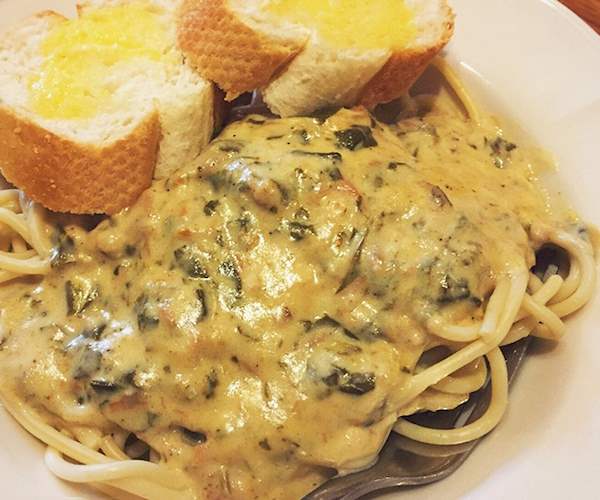
Small Talk Café
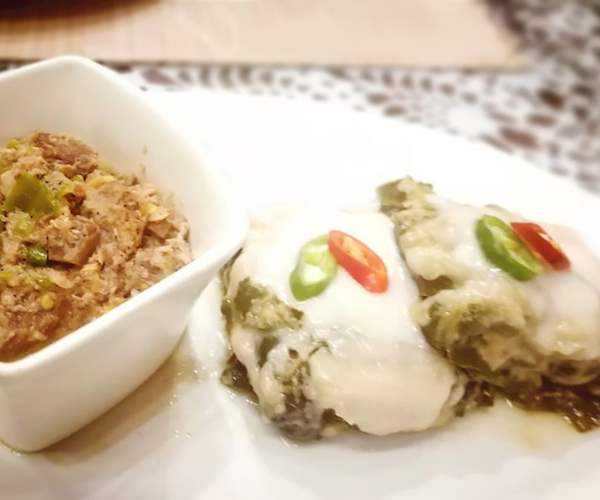
Red Platter

Bob Marlin
CUSTARD - Leche Flan
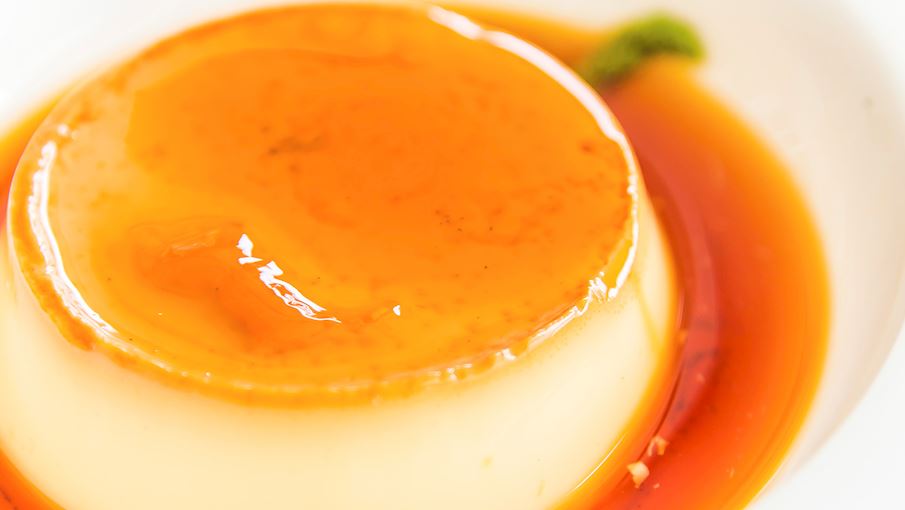
SHUTTERSTOCK
Leche flan is a Filipino dessert that is essentially a caramel custard consisting of milk, sugar, and eggs, with the addition of vanilla flavoring. Traditionally, it's oval-shaped due to the use of tin molds called llaneras. It is recommended to serve it chilled and coated with leftover caramel syrup.
Leche flan is very popular at numerous Filipino celebrations and social gatherings. Originally, it was brought over to the Philippines during the Spanish colonization, so it is believed that it has origins in the regions on the border of Spain and France.
Today, apart from being consumed on its own as a sweet treat, pieces of leche flan can also be added to halo-halo, another popular Filipino dessert.

Manam Comfort Food
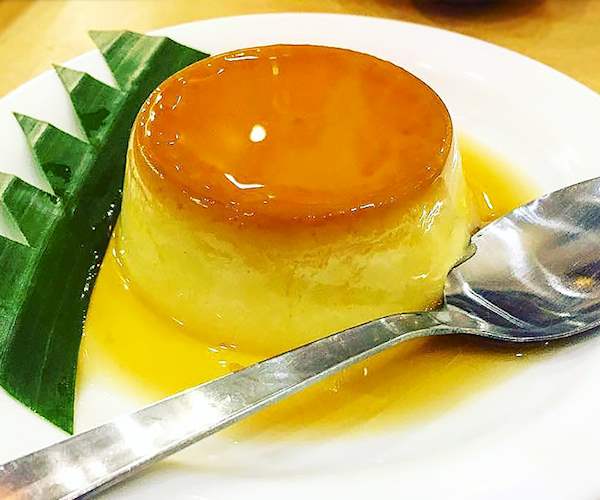
SHUTTERSTOCK

SHUTTERSTOCK
Bulalô is a traditional Filipino soup that is prepared by cooking beef shanks and marrow bones until the fat and collagen dissolve into the broth, resulting in a robust flavor of the dish. The soup is a specialty of the Luzon region, where it is traditionally consumed during cold weather, when it is usually served for dinner.
Most versions of the soup include vegetables such as cabbage, string beans, onions, and corn. It can be found in most upscale restaurants in the Philippines, due to the fact that beef shank and bone marrow are not among the cheapest cuts of meat in the country.
It is believed that this simple, comforting, and flavorful soup is the best when the meat is so tender that it falls off the bone.
Follow :
YouTube - https://youtube.com/c/HaveFunKeepFit
YouTube - https://www.youtube.com/channel/UCK9Ij7jSN4dVK8JxGwHadMQ
Instagram - https://www.instagram.com/havefunkeepfit/
Instagram - https://www.instagram.com/incaseumissedph/
Blog Site - https://havefunkeepfit.blogspot.com/
Blog Site - https://incaseumissed.blogspot.com/
Facebook - https://www.facebook.com/HaveFunKeepFit/
Facebook - https://www.facebook.com/incaseumissedph
Twitter - twitter.com/incaseumissedph
Soundcloud - @incaseyoumissed
Reddit - www.reddit.com/user/InCaseYouMissedRedd
Tumblr - cyberchaosland.tumblr.com/
Pinterest - www.pinterest.com/InCaseYouMissedPin/boards/
ClickDJ - click.dj/l/JPwo
Tell me what you think
In the comments below let me know what you think about on the list. Do you like them, do you hate them? Or even better, are there any other you believe would do a much better job?
Show your support
If you have enjoyed the article or if it was interesting and helpful in any way please subscribe, drop a like, comment and a share! It really means a lot and helps the blog grow and show your support











No comments:
Post a Comment